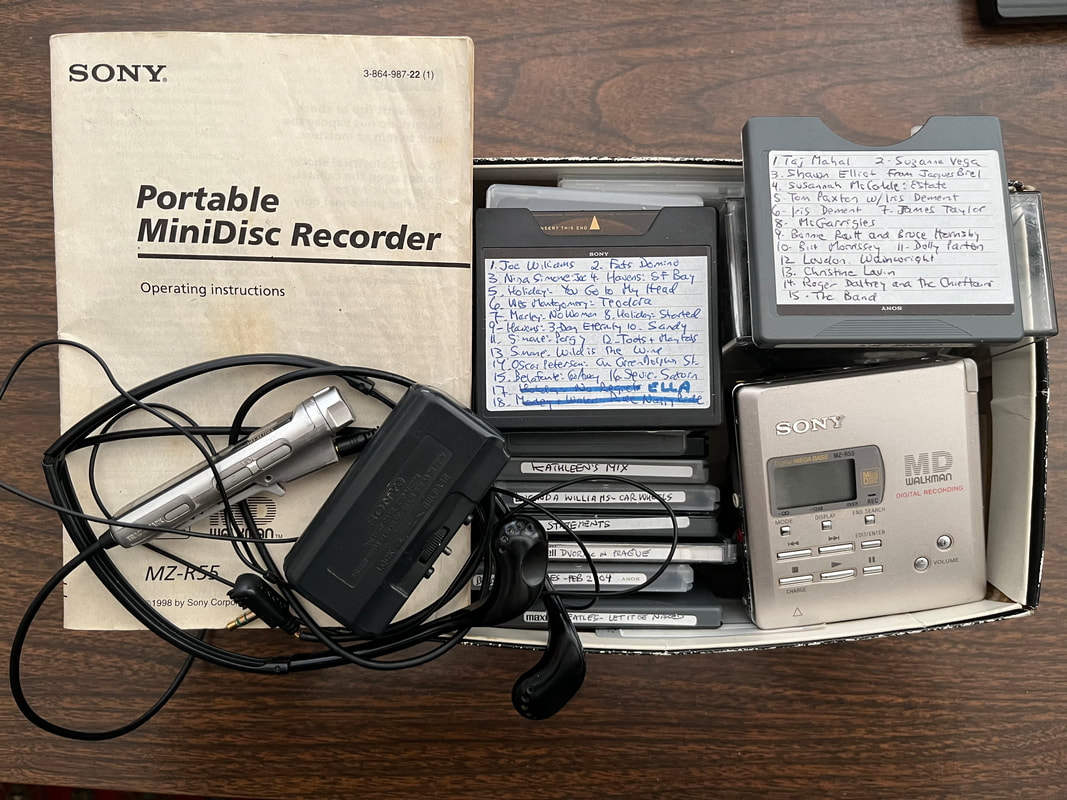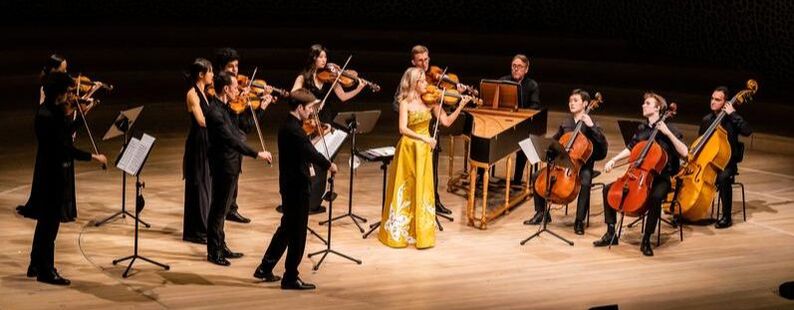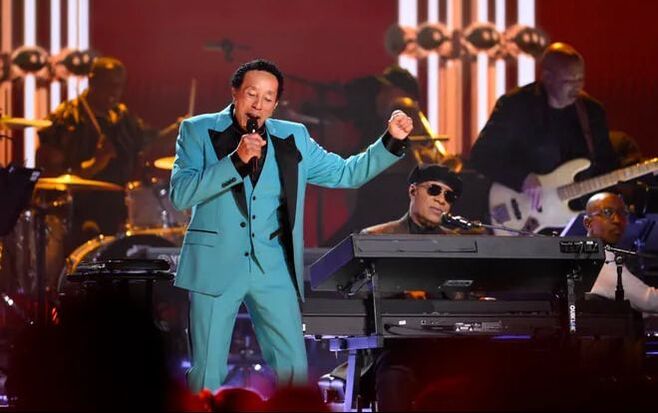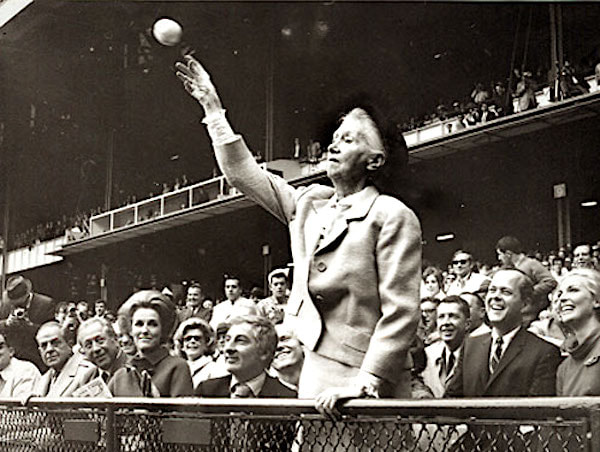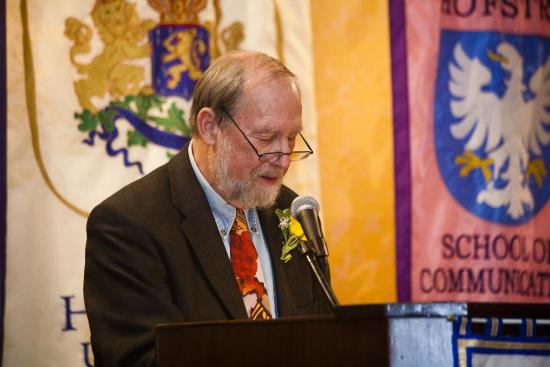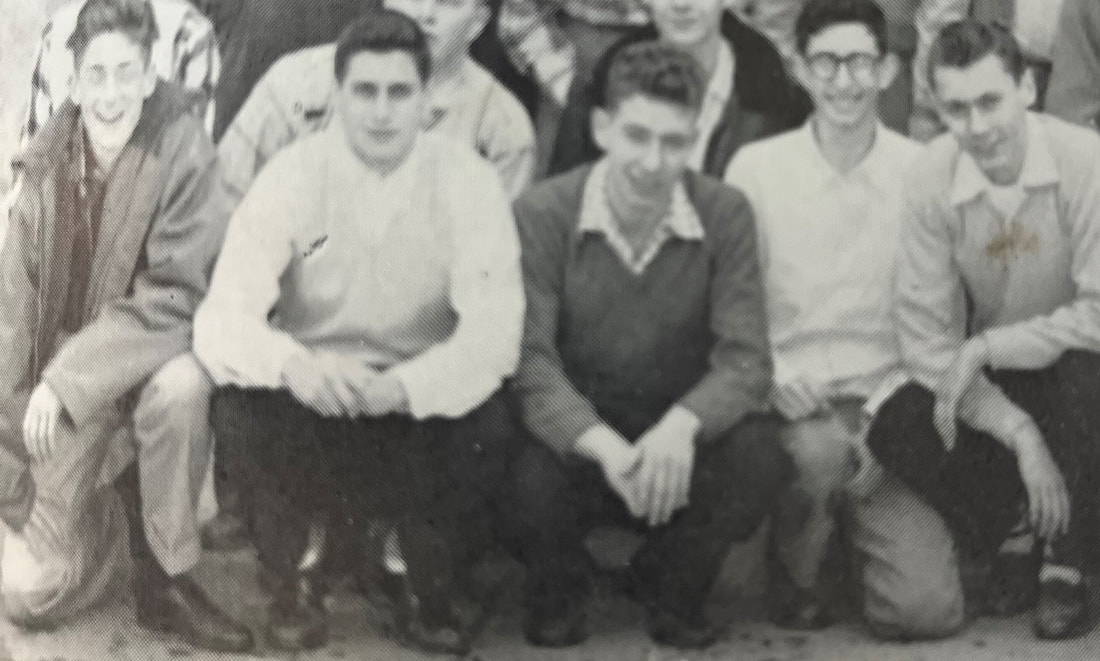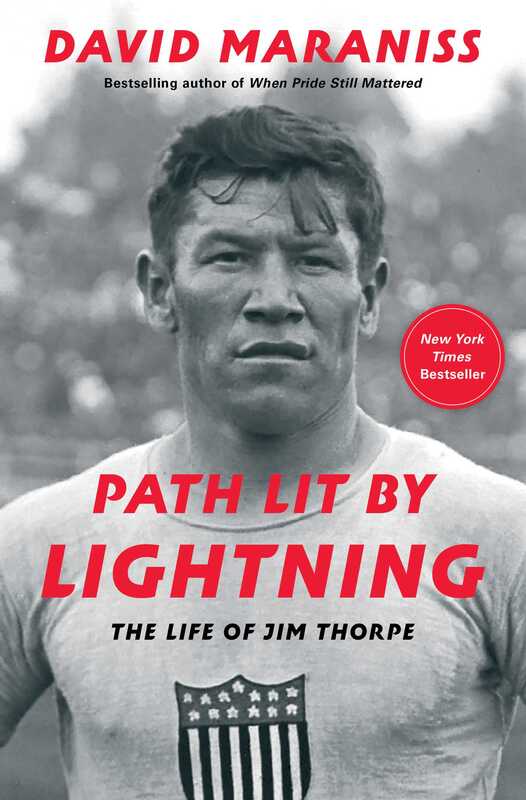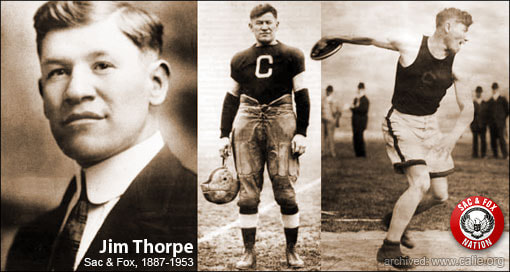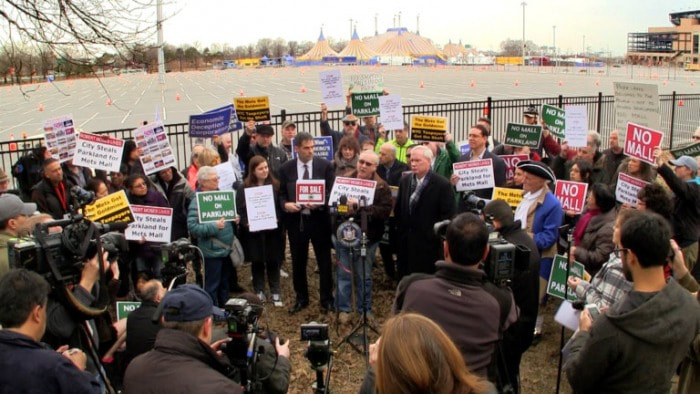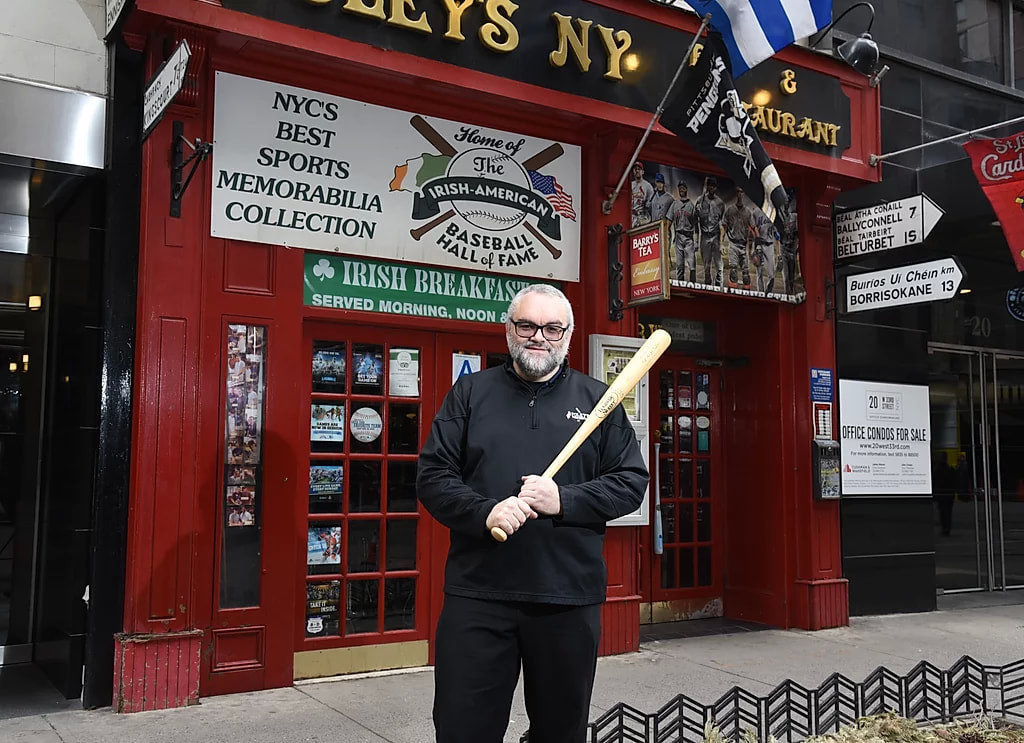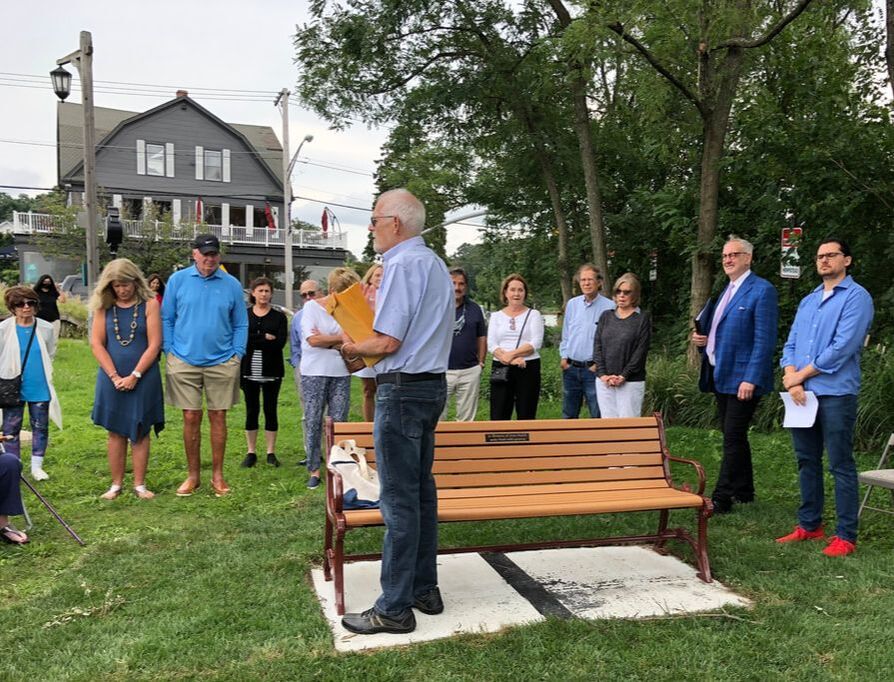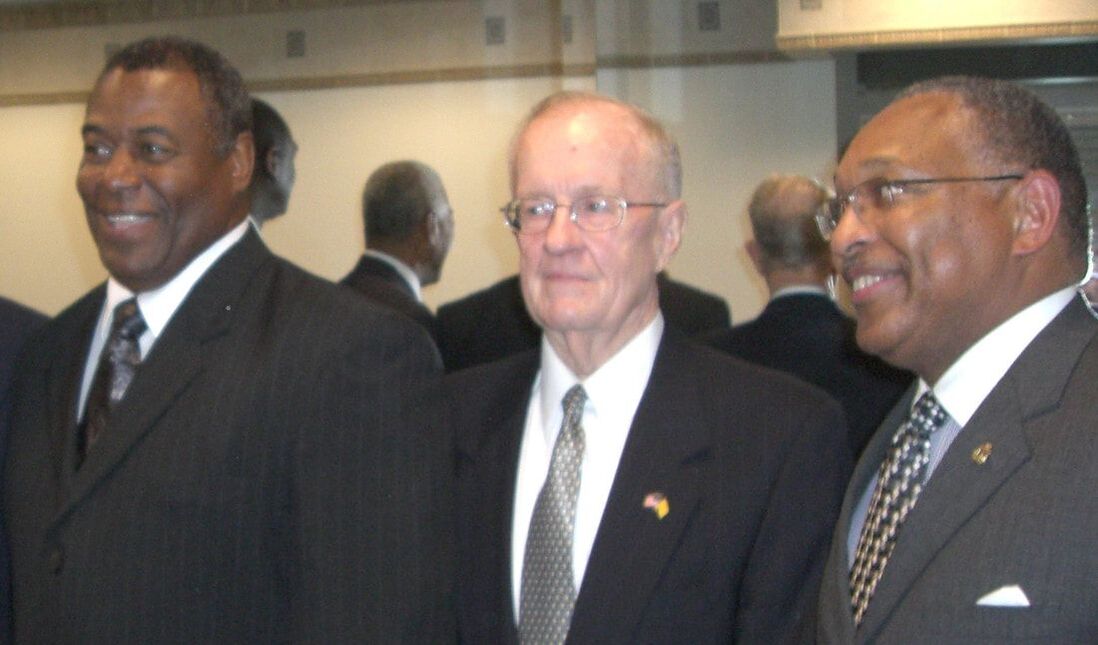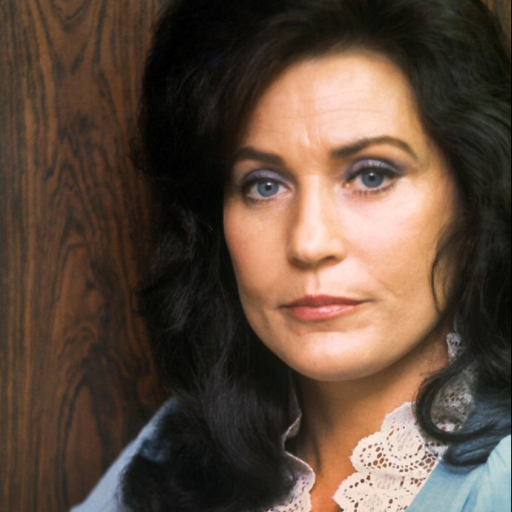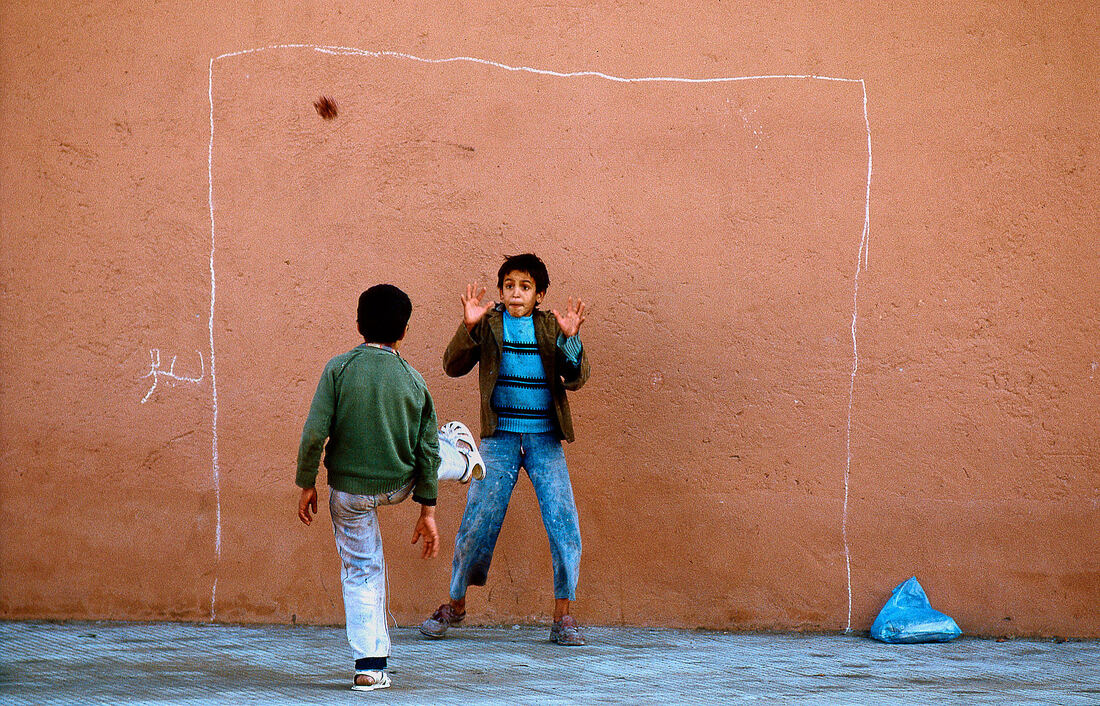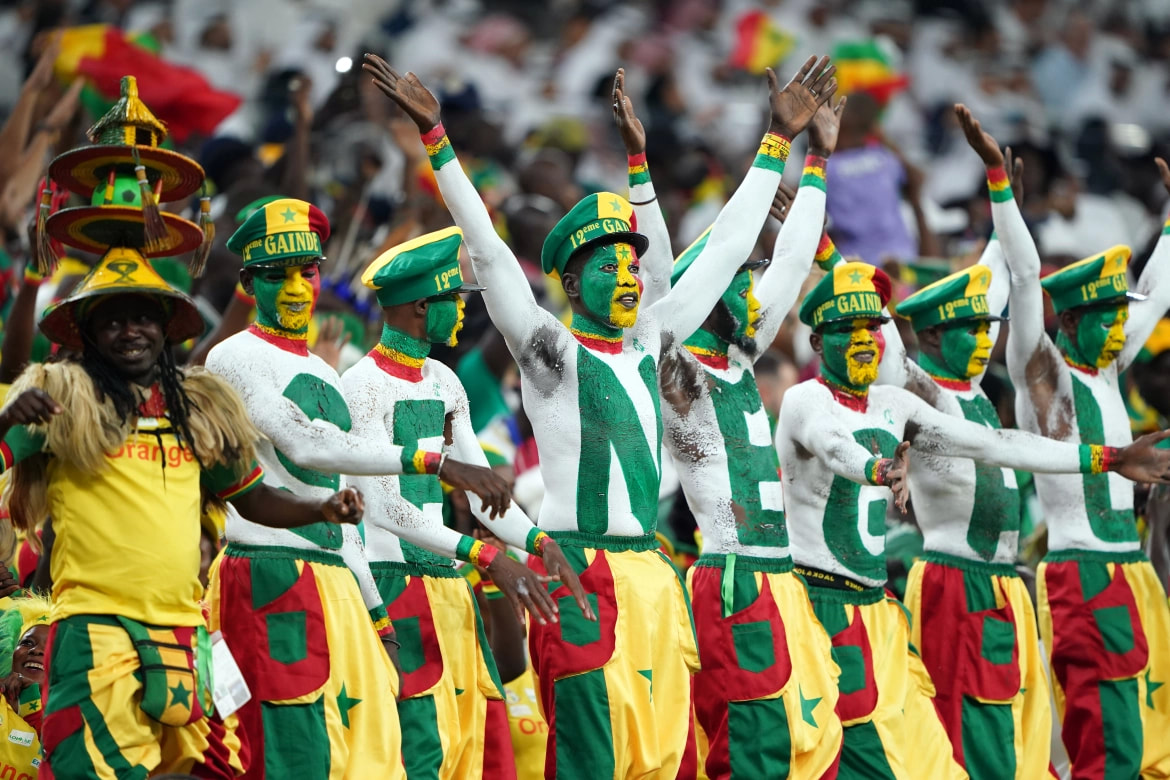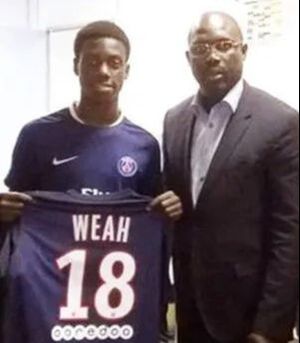|
Thursday: George Wilson, our grandson, has written about the music that a 26-year-old is following. I asked him, and he came through, overnight. His comment is around 23rd in the queue. GV Ever since the pandemic began – seems like decades – I had been mourning the music I stashed on my beloved MiniDisc Recorder and Player. Something was wrong – not batteries, not one bad diskette, but serious mechanical stuff, or so I thought. My music. For some people, music is the heartbeat of life, the faithful companion, in our ear, as we exercise or daydream. The MiniDisc allows some obsessive types to download and program favorite songs, favorite concertos – (I plead guilty.) Bad enough my wife and I have not dared see friends or go into the City. But no MiniDisc library, either? I was told via the Sony support site that this device from 1998 was neither being manufactured nor repaired – the story of our throwaway times. But the other day, I gave it a try, and for some obscure reason, when I popped in two new AA batteries and a trial disk, programmed by moi, familiar sounds flooded into the taut little headset, and my ears. A miracle cure.  Peter Fornatale Peter Fornatale This meant, first of all, that I could re-visit treasures I had recorded live from the radio, back in the day –particularly treasures from Peter Fornatale’s weekend show on WFUV-FM. Pete is gone now; he was a friend and neighbor, and we used to take walks together along Bar Beach, and he would talk about thematic shows he was preparing: *- One entire two-hour Sunday show about flying – including, of course, Arlo Guthrie’s classic, Coming Into Los Angeles. *-- Another two-hour special all about the Sunday papers -- including Adam Carroll’s homage to Blondie and Dagwood, that eternally married couple, with loving tribute to hard-working Blondie (“You’re looking pretty good for a girl of 82.”) * -- Plus two entire hours of “Ladies Love the Beatles,” – with Pete lavishly lingering over the title. The highlight, a cover of “All My Loving,” (linked here), by the great Christine Lavin. (Pete introduced us, and that wise, generous troubadour is still out there on the hustings.) I know there are other sources of music. I've got pop and classical music on my iPod, but have no clue about more recent sources. The joy of the MiniDisc is that you can be your own disk jockey, on your own whim or wisdom. In my little shoebox of sound I have gift disks programmed by Laura from Upstate, including a classic by Keb Mo’ – “More Than One Way Home” – listen to me, play this once a day, for your health -- and from Kathleen in Texas, a collection including “La Bamba,” by the real Ritchie Valens. So now, by some miracle cure from the great deity of out-of-supply MiniDiscs, on a warm Presidents’ Day, I went for a walk and chose a diskette I had programmed a few decades back: 1- Lovin’ in My Baby’s Eyes by Taj Mahal. 2- Room Off the Street by Suzanne Vega. 3- Fanette, with Shawn Elliott, from original “Jacques Brel Is Alive and Well. (evoking memories of the late 60s when my wife drove into the Village for a Sunday matinee.) 4- Estate, Susannah McCorkle, the late polylingual singer-writer, about gloomy endless Summer (“Estate,” Italian for “Summer.”) 5- Along the Verdigris, Tom Paxton and Iris Dement. I was writing a feature about the latest album by the Oklahoma-born folk singer, and he and his wife Midge delivered the cassette, and I was touched by this song, plus the backup by an unforgettably piercing voice. “You don’t know Iris DeMent?” they asked. 6- “Sweet Is the Melody,” by Iris DeMent, from Paragould, Ark. her ode to a dance hall, “A Friday-night romance, forgetting the bad stuff and just feeling good.” 7- “Like Everyone She Knows.” James Taylor. 8 –“Talk About It.” Anna and Kate McGarrigle. Another weekend/dance song. (I’m still mourning Kate.) 9 –“I Can’t Make You Love Me,” with Bonnie (3 Grammys) Raitt, and Bruce Hornsby, memorably. 10 – “Twenty-Third Street,” by Bill Morrissey, with his raspy voice, a man in a bar missing a woman who is living somewhere uptown. 11 – “I Will Always Love You,” by Dolly Parton. When I first saw her, backstage at the Opry, she was a shy mountain girl, still singing with Porter Waggoner. The legend is, she wrote this about moving on from Waggoner. Whatever. Doesn’t matter. Dolly aces all the other versions. 12- “Last Man on Earth,” by Loudon Wainwright. A declaration of manhood. 13– “The Scent of Your Cologne.” By Christine Lavin – on an elevator, catching a whiff of the fragrance used by her late, adored father. (On Christine’s “Shining My Flashlight on the Moon” album.) 14- “Raglan Road,” by Roger Daltrey and the Chieftains – about the pangs of love in Belfast, during the Time of Troubles. (You could also find a classical-sounding version by the great Loreena McKennitt, Irish-Canadian.) 15 – “Forever Young,” Bob Dylan and the Band. The Thanksgiving ritual. I know, I know, there are more contemporary ways to program music -- including my iPod with thousands of classical and folk, samba and soul. But that collection has been swallowed up in the mysteries of Apple Music, so no way for me to edit. Whatever. I'm now back in business with all those disks, two decades old, containing Dvorak, Britten, Stevie Wonder, Bocelli, Loretta Lynn. Grateful Dead. No matter what comes down…outwalk the pandemic....put one foot in front of the other. *** My overnight thought: Do the people a favor and put Keb Mo' right here, one click away. *** Players come and go – stars and role players – and fans remember the good things.
At least they do in baseball, maybe because it happens every day, and fans get to know players, even the ones riding the bench. That’s surely why a segment of Mets fans were rooting for Kansas City in the Super Bowl Sunday. Nothing against the Eagles. City rivalries, city putdowns, are over-rated, faux passion. But it wasn’t hard to like the Chiefs because of their live-wire quarterback – Patrick Mahomes, whose father played two seasons for the Mets. This is old news, now that it is officially baseball season, and not a moment too soon. Pitchers and catchers. I chose to read a book Sunday evening and tune out the Super Bowl – I’m long retired and don’t have to watch -- but the family message link was pinging with talk of Rhianna, whether or not she is pregnant. (She is.) From what I hear, the second major event on Sunday was the Mets’ commercial, every nuance relayed Monday by our son (born on the day the Mets clinched their division in 1969, just saying.) Nimmo sprinting, Lindor preening, Guillorme by the water cooler (ready to snag a wayward flying bat, no doubt), new Met Kodai Senga introducing his signature pitch, Nido interpreting, Edwin Diaz closing the deal, of course. Yet another bravo to Mets owner Steve Cohen. Mets fans get it. Those of a certain age remember Mahomes père, with an 8-0 record in 1999 and 5-3 the next year, then bouncing around for another decade or so. New York sportswriters who were around in those years – and I was – remember Pat Mahomes as one of those wise old heads who have seen it all, and when they pass through town they can talk about the sport, adult to adult -- Bob Watson and Chili Davis with the Yankees, Michael Cuddyer and Curtis Granderson with the Mets, just to drop a few names. Pat Mahomes used to bring his frisky little son with him to the ballpark and give him a glove and uniform and let him scamper around the field during practice. (Check out the great article by old-hand Steve Serby in recent New York Post.) https://nypost.com/2023/02/02/patrick-mahomes-father-knew-he-was-a-natural-athlete-from-youth-days-in-mets-infield/ It’s like watching old family movies. Actually, Mets fans were sentimental from their first year, 1962, when old Giant and Dodger fans flocked to the Polo Grounds to applaud Snider and Mays, Musial and Banks, back in Big Town. Later, Mets’ fans cheered Tom Seaver of the Cincinnati Reds after that abominable trade by a vindictive Mets official. These days, Mets fans never fail to greet Wilmer Flores – Weeping Wilmer, as we call him in this family -- for the way he watered the field with his tears on the foul night when he heard he might be traded. Wilmer has made a place for himself in San Francisco, doffs his cap, the Mets’ ultimate prodigal son. Now other Mets have moved on. Fans will surely greet recent Mets like Dom Smith, now with Washington, who showed his soul as a great teammate; Taijuan Walker, ditto, now with the Phillies; Seth Lugo, now with San Diego; and the new Giant, Michael Conforto, whom I could mourn more if I didn’t enjoy Starling Marte so much. Players come and go. I wonder how fans will react on Aug. 28-29-30 when the Texas Rangers come to Queens. With any luck, a healthy Jacob deGrom will be with the Rangers, maybe even starting a game. I would expect Mets fans to applaud him. But how much, and how hard? It seems to me, deGrom bolted from the Mets for more money and did not have much to say about his wonderful years in New York (unless he did not consider them so wonderful.) Was it the lack of runs? Or, no, it couldn’t be – was it us? Not a Weeping Wilmer situation. Definitely not a Weeping Wilmer situation. (Your thoughts? In Comments below) On the same weekend, hiding indoors from the cold, we were fortunate to catch two live shows dedicated to music -- both bristling with talent and energy. The radio show was on Friday, a live performance from Carnegie Hall, featuring Anne-Sophie Mutter and the Mutter Virtuosi, her ensemble of young musicians. The show was broadcast by WQXR-FM, the gem of a classical station which has recently enlarged its program of live performances. Not only that, but the station often assigns two of its assets, Jeff Spurgeon and John Schaefer, to be co-hosts. (Spurgeon is known for his witty three-minute synopses of upcoming operas; Schaefer is known for his esoteric taste in new recordings.) The two were posted in the wings of the historic hall, as the musicians walked toward stage, nervous tension crackling through our Bose FM radio at home. Because the concert was on the radio, we could not see which of her bright gowns Mutter had chosen, to go with her energy (and, dare I say it, her beauty) but the music reminded us why Mutter has been one of the best violinists in the world, for four decades, since her mid-teens. Mutter was the driving force in pieces by Vivaldi, Unsuk Chin, and Saint-Georges, a composer of Senegalese ancestry, who was a few years older than Mozart. The co-hosts told us that Saint-Georges is the subject of a forthcoming movie, “Chevalier,” due to be released in April. After the break, Mutter led the ensemble through a bristling version of Vivaldi’s “Four Seasons,” and then the audience (this was, after all, Carnegie Hall) was treated to three encores. Finally, the musicians filed off the stage, punctuated by shoes scuffling and satisfied fragments of chatter. Schaefer likened himself to a sports broadcaster in a clubhouse, watching and interviewing athletes after a good performance. Mutter herself stopped and gave a proud baseball manager’s critique of her players, generous with her time for Spurgeon and Schaefer. In our living room, my wife and I applauded – for the leader, for the ensemble, and for the two hosts. Bravo, WQXR. Bravo! *** Two evenings later, we found a warm corner in our house to watch the Grammy awards. We are acutely aware of being, how can I say this, out of it. We don’t know the contemporary pop music that our kids and grandkids choose, but my wife has been an early fan of Adele, and I had heard that Stevie Wonder and Smokey Robinson were on the card, and that Bonnie Raitt was up for a few awards. Quite enough. We marveled at the star power of Lizzo and her group -- "Big Grrrls" – and we could detect the intelligent sizzle from Taylor Swift – and I wondered why the dynamic singer from Puerto Rico is named Bad Bunny – and we frankly didn’t think Harry Styles has much of a voice. Or does that matter?
But Stevie Wonder had the same impact that he did 50 years ago when he was “Little Stevie Wonder” – and Smokey Robinson could still rock. When Grammy-winner Kim Petras announced that she was the first trans woman to win an Oscar, I could not help but wonder what Gov. DeSantis of Florida – that scowling, ignoramus latter-day George Wallace wannabe -- was thinking, if he was watching. Will he ban the Grammys next year? Or CBS itself? Then came the spectacle – an anniversary celebration of hip-hop – 50 years? Really? A lot of gents with attitudes and costumes, names and faces I sort of recognized, came bounding onto the stage, chanting things that merited a quick and frequent network finger on the bleep key. Frankly, I was spellbound by the procession. Wish I had somebody to explain who they were and what they stood for. But…but…I liked them. Keep bouncing, guys. Beyoncé arrived late. The word was that she got stuck in LA traffic. I didn’t believe it for a minute. Beyoncé merits a squad-car escort with red-lights flashing. Late is fashionable. Beyoncé is fashionable. She can do better than that excuse. The Grammys honored dozens of music people who passed in the last year, starting with a sweet tribute to Loretta Lynn by Kacey Musgraves, singing her signature, “Coal Miner’s Daughter.” My whole family, watching here and there, pinged its approval and why wouldn’t they? Auntie Loretta invited me to help write her autobiography—and put our three kids through college. Thank you, darlin’. Nearly three hours into it, First Lady Jill Biden came out to present the award for the best song. The announcement seemed to legitimately stun her fellow septuagenarian, Bonnie Raitt, who somehow managed a kind and coherent acceptance speech. I have been a fan of Raitt for decades, particularly for her “Road Tested” double album -- one of the most played albums on my iPod – with heart-touching songs like “Longing in Their Heart” and “I Can’t Make You Love Me” qualifying me as a flat-out Bonnie Raitt groupie. As poleaxed as she seemed, Raitt found the grace to mention John Prine, her friend who died of Covid nearly three years ago, who wrote the song “Angel from Montgomery,” on that same “Road Tested” album. Bonnie Raitt, thanking John Prine. With an hour to go on the Grammys, I clicked off the tube. Quite good enough for me on this long, cold and highly musical weekend. A week ago, I wrote about a terrific new biography of Jim Thorpe, by David Maraniss. I was particularly tantalized to read that the great American athlete, while at the Carlisle Indian School in Pennsylvania, had been friendly with a young teacher named Marianne Moore. Yes, exactly, the same Marianne Moore who soon moved to Brooklyn and became a famous American poet into very old age. Finding Miss Moore in a Thorpe biography touched off my recollection that in 1968 the worldly president of the New York Yankees, Michael Burke (whom I miss to this day), invited her to throw out the first ball on opening day. The mention of Marianne Moore also touched the heart of the writer, Sam Toperoff, who has been my friend and inspiration since he was a basketball player/scholar at Hofstra College in the late 1950s. Within 24 hours, I received Sam's email from the Hautes-Alpes department of France, containing references to two poets who won Pulitzer Prizes, 49 years apart – Marianne Moore (1952) and our friend Stephen Dunn (2001.) Sam wrote: “Dear George—After my first book came out, I got a call from the editor to tell me Marianne Moore loved it and wanted to talk with me about it. She invited Faith and me to tea on a sunny Sunday. She lived in a brownstone downtown, very near the Tombs. The fall of 1965, I think. She was, when she opened the door, indeed Marianne Moore, the old lady whose poetry I had studied as a student and taught as a professor at Hofstra. “Yes, I was intimidated. But the editor had told me she wanted to meet me because she thought me very brave to have endured all I had written about in my book when in fact for me it was just a normal accounting of my lower middle-class family life as I had lived it up to that point.” (NB: Sam’s first book was “All the Advantages,” circa 1965, which was nominated for a Pulitzer Prize by the Atlantic Monthly Press.) Sam recalled how Miss Moore “served tea and cookies she had baked herself. Marianne Moore! All was sort of stiff and formal until somehow the subject of baseball came up — I knew from her poetry she loved the game. Then she went off on the Dodgers. Remember, she had spent most of her writing life in Brooklyn; she had just moved to Manhattan. Well! She loved Pee Wee Reese, spoke poetically about him, how he glided, how effortlessly he played, how good he was for Jackie. Marianne Moore! She also lauded Red Barber for making her life so rich in her Brooklyn apartment. That was mostly what we talked about with Miss Moore that long afternoon — the Brooklyn Dodgers! “I signed my book for her; she signed her last collection for me. And we went home. Her volume sits on my shelf next to Stephen Dunn.” Before Stephen Dunn became a poet, he was a zone-busting jump-shooter teammate of Sam, who, on long bus rides into the wilds of Pennsylvania, encouraged Stephen to use the rest of his brain. My college athlete pals (I was the student publicist) followed Stephen’s fame and also his terrible battle with parkinson’s disease, which rendered him unable to recite his own work in later years, although he wrote to the end. Sam wrote: “As Steve was dying — I only thought he was ailing, damn it — he sent me a poem called ‘Final Bow.’ That’s when I got the message. Then when his collection came out, this was the poem he used to say goodbye, so he had orchestrated his own exit, the son-of-a-bitch. It’s a superb and funny and serious poem. “Hell, why don’t I type it, forgive me if I cry:” Final Bow In my sleep last night When the small world of everyone Who’s mattered in my life Showed up to help me die, I mustered the strength To rise and bow to them A conductor’s bow, that deep Bending at the waist, right arm across my stomach, the left behind my back. At first it seemed like the comedy of aging had revised and old scene-- how, with time running out, I’d make the winning shot In my schoolyard of dreams, Only now I was wearing an unheroic gown, apparently willing to look foolish-- for what? What no longer mattered?-- before I lay again down. ---Stephen Dunn, 2021 Sam wrote: “I take that last poem of his as something of a challenge: How to go out the right way.” Stephen died on his 82nd birthday in 2021. Sam added: “And yes, I did cry. I love this poem. I love him, his talent, his courage, his exit.” Larry Merchant writes, in the good old New York Post, about Marianne Moore:
https://storyoftheweek.loa.org/2019/10/poetry-in-motion.html 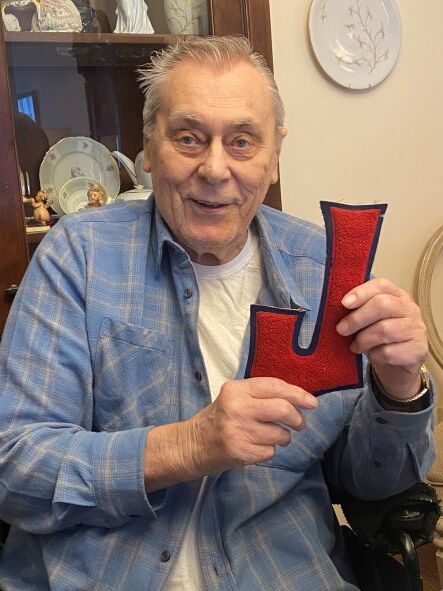 Bob Seel. Photo by Steve Seel Bob Seel. Photo by Steve Seel (We all put stuff in boxes or suitcases and stick them in a closet or an attic or under a bed. And there they sit.) Bob Seel had no shortage of varsity letters – 10 in four different sports at the college formerly known as Philadelphia Textile, now Thomas Jefferson University. This letter popped out of a cardboard box recently – a large “J” from Jamaica High School in Queens, where Bob was the star and captain of the soccer team, as a senior, merely 67 years ago. He called me to say, "I found my letter." I can attest to his skill and leadership. I was a defender of no known skill or experience, when Bob was playing in goal. In his shrill voice, Bob would bark commands at me, as if that would help. By mid-season I was on the bench, which meant I had the privilege of watching Bob Seel -- one of the best players in the city. “We both played two positions,” recalls Dr. Robert Mindelzun, still teaching radiology (via Zoom) at Stanford University, but then a survivor of the terrors of the Holocaust, finding a refuge in Queens. (I wrote about his life not long ago.)
“If Bob was playing up front, I would play goalkeeper, and if Bob was in goal, I would play up front,” Mindelzun said the other day. Mindelzun earned honorable mention in our county, and later played for Queens College before settling in Palo Alto. (By my count, five teammates became doctors.) Dr. Mindelzun recently watched the World Cup, including the tie-breaker device of penalty kicks, that decided the championship for Argentina over France. He doesn’t think he or Captain Seel ever had to deal with a penalty kick because “there was only one ref, and they were not about to call penalties.” If the game was tied, the visitors would get back on the subway and go home. That raised my question: in this modern era, goalies wear gaudy glow-in-the-dark Captain Keeper outfits – yellow, purple, green, red – to differentiate from field players. But in those prehistoric times, keepers wore the same kit as the field players. If we needed a goal, Bob Seel might switch to center forward, and Bob Mindelzun would move back into goal, same outfit. Somehow, the game got played. Seel already had a large varsity “J” from his junior season at Jamaica, which was sewed on a long white sweater. He has no idea what happened to that sweater, but another letter remained in the family home, in a box, until the Seels downsized, a few years ago. “We moved from New Hyde Park to Seaford,” he said. “We had to move because I’m in a wheelchair.” This superb athlete has neuropathy, often connected to nerve damage from one trauma or another. Bob’s wife, Barbara, says he got it from playing too many sports – get this: four years of college soccer (three of them as captain), three years of basketball, two years of baseball and one year of tennis. As a senior at Philadelphia, he was named the outstanding athlete and was given a watch – “which I still have,” he said, adding that it does not work. Most old sports stuff, blessedly, gets tossed out. Pretending to be an athlete, I had my one varsity “J” sewed on a blue satiny jacket with red trim, with on it, and I wore it so often that it was dirty and ragged –– until it got junked in my mid-20s. Bob Seel and I lost contact while he worked as an agent for the Treasury Department and I went into journalism, A couple of decades ago, we met at a reunion and I had a flash of memory of his leadership and his fire and his skill. (Meantime, the geniuses who run New York schools terminated Jamaica High a decade ago, putting three or four smaller schools in that beautiful hilltop building.) While working on my soccer book, “Eight World Cups” for 2014, I talked to Bob about his background in soccer. He told me his dad learned the sport in the Kaiserslautern region in southwest Germany, and then his family moved to the soccer hotbed of Glendale-Ridgewood-Maspeth in Queens. Bob played youth soccer near the hallowed soccer field known as Metropolitan Oval. (I once played defense there against Grover Cleveland High, facing the city skyline and the late afternoon sun, while a curly-haired marauder named Bubbi Herink flitted past me and scored several goals past poor Captain Seel.) Bob and Barbara Seel now live in a complex on Long Island, where he can scoot out to a clubhouse and play cards and schmooze with his pals. I have never heard him complain. Recently, the Seels were sorting through an extra cardboard box, left from their move, and there was the “J” – in pristine condition. What will he do with the letter? “I have no idea,” he said. Their son Steve took a photo of the Captain, flashing that modest, pragmatic smile, holding the “J,” When I was a kid, Jim Thorpe was still alive (he died in 1953, just short of 65.) Sportswriters and athletes and fans had seen him perform.
He had been dubbed “the most wonderful athlete in the world” or “the greatest athlete in the world” by the king of Sweden after dominating the 1912 Olympics in Stockholm. Thorpe was also known as the first great American football player who later played baseball for the New York Giants but could not hit a curveball. (Neither could Michael Jordan, decades later.) Thorpe was a cautionary tale – via snickering sports-page references to firewater and lack of discipline and other weaknesses. He was part of the broader picture of a country where white invaders felt they had holy permission to kill as many Native Americans as they could. The new Americans had various words and definitions for Jim Thorpe, back in the day -- "Chief" or "Redskin,” referring to his mixture of Sac and Fox, Potawatomi, Kickapoo, Menominee, as well as French and English. "By that definition, Jim Thorpe would tell people he was five-eighths Indian," writes David Maraniss In the stirring biography, "Path Lit by Lightning," a current best-seller published by Simon & Schuster. These days, some of us tend to use the word “Indigenous” rather than “Indians” or “Native Americans” for the descendants of people who lived for hundreds, thousands, of years on this continent, very often in harmony with nature and neighboring tribes. They were so far more complex than contemporary Americans can imagine. Great reporter that he is, Maraniss parses the life of a great athlete born on a reservation in Oklahoma, when the white invaders were taking what they wanted – often at the point of a gun. The title of the book refers to Thorpe’s name, translated from the Sac and Fox language, as American leadership tried to gouge the native words and ways out of the survivors of the killing fields. Whereas the Civil War general, Philip H. Sheridan was known for saying “The only good Indian is a dead Indian,” his philosophy had been moderated just a tad by Col. Richard Henry Pratt, the first superintendent of the Indian school at Carlisle, Pa. “In a sense, I agree with the sentiment,” Col. Pratt is quoted by Maraniss, “but only in this: that all the Indian there is in the race should be dead. Kill the Indian in him and save the man.” The most blatant example was in Carlisle, which recruited male athletes from all over the country, playing the top colleges (Ivy League!), and keeping the athletes in uniform as long as possible, in those days before the niceties of the N.C.A.A. Thorpe arrived in Carlisle, young and under-sized but rugged, hard to tame, motivated to play football better than anybody. Perhaps the most delightful surprise in the Maraniss book is the young teacher, the same age as Thorpe -- Marianne Moore, later a famous poet ensconced in the gentility of Fort Greene, Brooklyn. In letters to George Plimpton decades later, Moore described Thorpe’s strength and athletic gait and recalled him, as a “diligent” and polite student. She also told Plimpton that Thorpe had walked alongside her on campus and said, “Miss Moore, may I carry your parasol for you?” Another sweet little section is when Thorpe fell in love with a fellow student, Iva Miller, 20, from out west, who was raised among indigenous but was all Caucasian. Thorpe had been playing baseball for the professional New York Giants, recruited partially as an attraction for an off-season world tour in 1912 – Asia, Australia, Europe. The two were married before the train headed west from New York, and the 20-year-old bride filled her diary with the details of a girl in love with a man she called “Snooks” and also with the world out there. She took notes about seasickness and rickshas and shopping and parties, later riding donkeys or camels at the Pyramids and wandering around Paris to the Moulin Rouge and Napoleon’s tomb. The reader roots for her life to go on and on like this. But the “greatest” athlete was already blighted by the “revelation” that Thorpe had played minor-league baseball (for money) in his summers at Carlisle, and his Olympic medals were taken away for violating Olympic amateur standards. Needless to say, the poohbahs in the “amateur” world of sport and education knew nothing of his minor-league forays. Maraniss describes the role of noted Carlisle coach Pop Warner,”where everything was made to be subservient to athletes and football.” In other words, college football (and its coaches and presidents and boosters) hasn’t changed a bit in more than a century. The last third of the biography careers downhill -- divorce, two more marriages, children, tragedies, jumping from team to team, from baseball to football, working in construction during the Depression, erratic behavior, all so predictable, all so sad. Yet Maraniss points out that the indigenous people did not go away. He refers to the diversity and accomplishments of the indigenous today – doctors and lawyers and civil leaders, teachers and writers and performers. Off the top of my head, I toss out the current names of Deb Haaland, Secretary of the Interior, a Laguna Pueblo; Buffy Ste. Marie, Canadian-American from the Piapot Cree; and Louise Erdrich, writer, from the Turtle Mountain band of Chippewa. The invaders did not succeed in wiping out the Indian ways. And in this compelling biography, David Maraniss shows how, early in the 20th Century, Jim Thorpe took the hits. It's bad enough that Baseball Commissioner Rob (Roll ‘Em) Manfred has brought about a sleazy era of gambling on the sport that has banned Pete Rose for life.
Baseball is also the former holier-than-thou business that banned Willie Mays and Mickey Mantle for fronting for gambling dens after their retirement. They were reinstated, but then Rose got busted for life for violating gambling rules. Nowadays baseball runs blatantly insulting commercials of young males displaying their insecurities by betting on sports events. Some hitter in a distant ballpark smacks a double off the wall and the young man leaps from his chair, as if he himself hit the damn ball. Encouraging gambling is Rob Manfred’s game, and maybe Steven A. Cohen’s world, on deck. The Mets’ owner is pushing to see if he can get away with building a gambling den a dice throw away the ball park named after a bank. Cohen has been an activist owner since taking over the Mets – getting rid of a lot of deadwood in the organization and spending millions upon millions for better players plus activists like Billy Eppler and Buck Showalter. Those are the current conditions, and Cohen spends and spends. (He also showed great showman instincts by staging two of the best feelgood events I’ve ever seen in a ballpark – the retirement of the No. 17 of Keith Hernandez, and reviving the Old Timers’ Game and festivities, including a dying John Stearns, and survivors of Mets’ stalwarts Tommie Agee, Alvin Jackson and Bill Robinson. Events like these do not just happen. They take money, and staff, and good instincts on the part of the still-new owner. One suspects Cohen will even go ahead and sign Carlos Correa, unless Correa truly has a lead leg. Cohen is no fool. He avoided getting stung by over-paying for the five-innings-a-week pitcher, Jacob deGrom, despite the grand memories of when deGrom was healthy. (As for deGrom’s cold-blooded “I’m rich! I’m rich!” smile when he bolted from the Mets with nary a kind word about the good times in Flushing: As we say in Queens, Yeccch!) Cohen understands the process of making more and more money. He has noticed the bleak concrete emptiness of parking lots -- “50 acres of asphalt" -- to the west of New Shea Stadium, and he has envisioned late-model cars bringing lucky tigers escorting handsome women, with money to burn. Or at least, that is the image. Fortunately, the governments of New York city and state still have a chance to veto a gambling den on very public land. (Wait, don’t Mets fans park their cars there 81 home games a year? Isn’t traffic bad enough in that tangled sector?) According to the Wall Street Journal, Cohen held an open house for interested Queens types the other day. No fool, Steven A. Cohen. He played down the lust for a gambling den by saying he just wanted to hear the opinion of the Queens folks – known for their cagey urban instincts (sussing out the criminality and bullying of former Queens resident Donald Trump.) At the open house, my Queens homeys seemed to voice a skeptical attitude toward the gambling den. According to the WSJ, the folks who showed up – for a ballpark frank! – voiced preference for live music, dining, art exhibits and festivals rather than gambling. The WSJ reported that Laura Shepard, a community organizer for the transit advocacy group Transportation Alternatives, told Cohen that the development should be a destination that people can walk, bike or take transit to — not just drive. “Personally, I don’t want to see the casino,” she said. “Most people want more green space, concerts and community events.” There is a lot of communal pride in Flushing-Corona-Jackson Heights-Forest Hills swath of Queens, home to a hundred languages and food tastes. This is the same region that fought back an attempt to build a soccer stadium on the crowded public fields of Flushing Meadows park a couple of decades ago. A big-time soccer stadium will soon be built where the chop shops once hunkered. Isn’t that enough upgrade for anybody? The locals should tell Cohen and Manfred: Go gamble somewhere else. Go to Atlantic City, that once bled the great businessman Donald J. Trump. Go to hilly Connecticut where white marauders once slaughtered Indigenous people near the site of today’s Foxwoods -- tainted grounds, now packed with roulette wheels and poker tables and sporty folks. Here’s one idea for Stephen Cohen’s “50 acres of asphalt:” Mara Gay of the New York Times recently wrote: “More and more, living in New York is out of reach not just for working-class or middle-class residents but nearly anyone without a trust fund.” I bet Steven Cohen could make a few bucks from something actually needed, like moderate-cost housing. Then, there is this. One of the great New York City treasures of recent decades – an Irish/baseball pub, if you can imagine, named for a gremlin sportswriter, Red Foley – had a trove of baseball souvenirs covering every inch of wall and ceiling across the street from the Empire State Building. But the pandemic forced the proprietor, Shaun Clancy, to close down (paying his workers for at least a month, out of heart.) Shaun is now cooking at a refuge for the homeless on the Gulf Coast of Florida; he chats up the weary while doling out something filling and maybe even healthy. I bet you – pardon the expression – that if Steven A. Cohen erected a Foley’s II on the ”50 acres of asphalt,” Shaun would dust his vast souvenirs from its storage place, and oversee a renaissance of Foley’s II. And patrons could teeter discreetly to the 7 Line or the LIRR station, staying off the highways. Win-win. Steven A. Cohen, meet Shaun Clancy. ALLAN MISSED HIS WIFE Allan Fishkind took care of people, most notably his wife, Joan Smith. She was the star, the name on the bustling shop, Joan Smith Flowers, with her talent and hearty personality that charmed friends and clients alike. Allan, big and strong and dependable and low-key, drove the flower arrangements into toney clubs and hotels in the city or around our town, maintaining the shop, fixing stuff. Joan was the love of his life, and vice versa, both of them coming from earlier marriages, with children. With friends, Joan would unwind, tell stories of her Dickensian childhood, leaving home in her mid-teens, surviving in a Y. Allan did not tell stories. He was tall, like Joan, usually with an inscrutable smile on his face. Some attributed his mellow presence to what he called his health regimen. He also found time to take care of a blind friend who bravely lived in her own house. In the days after 9-11, he collected clothing and blankets and drove them to the collection point at the edge of the horror scene. In our old waterside commuter town, Joan and Allan were townies. I remember them talking about a bar that had line dancing on weekends or a spaghetti-and-meatball fest for some good cause. Allan took care of Joan during her illnesses, which neither discussed, even when the shop closed down. Two summers ago, they popped over to our deck, Joan as chatty as ever. My wife loved Joan, knew her well, and sussed out that Joan was saying goodbye, which turned out to be true, on Sept. 20, 2020. There was no service, no fuss, but Allan’s goal was to arrange a memorial bench for Joan at the edge of Manhasset Bay, across the street from Diwan, a favorite restaurant. He accomplished this on a sweet Sunday morning, Sept. 5, 2021, greeting friends from all their circles, giving a sweet talk about Joan, the star. Then he settled into a routine nobody could quite chart – but clearly, life without Joan was not the same. This past summer, Allan materialized on our deck, settled into a chair, and chatted about himself more than he ever had before – even alluding to his own youthful hard times. We made him an herbal tea, and he chatted some more. He looked thin, and it turned out that other friends were telling him he should check with a doctor, but he delayed until he was days away from death from pancreatic cancer. Word got around that Allan had been buried by a son, somewhere upstate, far from the town Joan and Allan had graced. When I go for a walk along the bay, I stop by Joan’s bench and think of both of them, together. Joan and Allan. 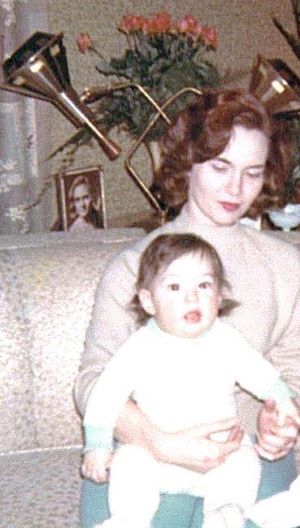 Caryle and Michele Caryle and Michele MY COUSIN CARYLE ADMIRED JUDITH JAMISON Among my earliest memories are two Spencer cousins. Art died last year and his kid sister Caryle passed this year. I can remember a lot of giggling when we were little and our families would get together. My wife and Caryle shared an interest in family genealogy, and would compare notes – and on the rare times we got together, Marianne says, Caryle retained an adult sense of humor. Also, my brother Peter loyally visited Caryle in her final, uncomfortable years. But the person who knew Caryle best is her daughter, Michele, now living in England. Michele wrote a lovely tribute, which includes the memory of her mom being “a bit of a tomboy, and loved being outdoors and in nature,” as a girl. Michele recalls walks on nature trails and horseback riding and bird-watching and home crafts, making Christmas decorations and fruit cakes “that took months of soaking in brandy and had the weight of a doorstopper.” Caryle fed local birds like cardinals and hummingbirds and took in stray cats and often had a horse or two nearby. Michele added: “What I most admired about her was her complete lack of prejudice or bigotry.” Then Michele added a surprise to me: “The second was her love of dance. She didn't make a show of it, so it's easy to think it wasn't that important to her. I've come to suspect it was a deep part of who she was. “Mom loved ballet and modern dance and took lessons in both during her early adulthood. She even took part in an interpretive dance troupe at our church. She loved musicals that featured dance, and I have many childhood memories of staying up late with her to watch old musicals on television. “What I didn't fully comprehend until many years later was the depth of her interest. That realization came at my college graduation. The commencement speaker was American dancer and choreographer Judith Jamison. Mom surprised me by not only having heard of her but knowing the full history of her career and having seen her dance with the Alvin Ailey American Dance Theater. It was the only time I've ever seen her star-struck. She was desperate for an autograph but couldn't work up the nerve to approach her.” As it happens, I once interviewed Judith Jamison and was struck by her elegance, her intelligence, her long expressive hands and eyelashes. Whenever I think of my cousin Caryle, with her animals and her crafts, I will hold on to this vision of her, adoring the glamorous and thoughtful dancer. Historian of a Steel Town Charles E. Stacey never left his hometown. He went to school in Donora, Pa., alongside the Monongahela River, when the mills were running, and clogging the lungs, when Stan Musial was the most famous native. Dr. Stacey stayed in Donora and taught history, and one of his pupils was Reggie B. Walton, a football star with a brain and a will. “I can visualize him in American History, near the back, fourth row,” Dr. Stacey said a few years back. “Near the window. Totally attentive. Everybody liked and respected Reggie.” Reggie Walton went away to college, and law school, and became a federal judge known for his independence, his dedication to fight drugs. Charles Stacey became the superintendent of schools, and he and his wife, Sue, remained on McKean Ave., the main drag, with its empty movie theatres and restaurants. Somebody had to be the voice, the memory, of Donora, available to teach the history of the region to visiting students and reporters. When I was writing the biography of Stan Musial in 2011, I met Charles (“call me Chuck”) Stacey, who was running the Donora Historical Center, in a deserted storefront on the main drag. I asked if he could put me in touch with his star pupil, and a few days later my phone rang and a voice said, “This is Reggie Walton. Dr. Stacey asked me to call you.” And when Donora honored the star baseball player, Ken Griffey, Sr., not too long ago, Judge Walton made it back to be with his old teammate. The two stars stood alongside their teacher. Dr. Stacey died on April 25, at the age of 90. Every small American town deserves a Charles Stacey, who remembers the people who settled and worked and dreamed. Lucky Donora. It had Charles Stacey. BEAU GESTE BY AN OLD FRIEND Last month I heard from Sam Toperoff, athlete and writer, that Thierry Spitzer had died in a car accident. I remembered Thierry as an active pre-teen, but in fact he was 58. At the memorial for Thierry in the old neighborhood in Queens, I caught up with his sisters, AnneLise and Karine, and I told them my two daughters always felt Thierry had a certain life force, as a long-haired active kid. I hadn’t seen Thierry since he was an early teen but I knew he had worked for decades as a waiter at the Hotel Carlyle in the city. His dad, Philip Spitzer, who died last year, had been an agent for me and also for Sam Toperoff, who now lives in the French village near the Alps, a second home for Thierry’s mother Anne-Marie. Sam, being a writer, told me about the adult Thierry:“A very sweet and funny man. Less than two months ago, he was sitting in my big comfortable chair in the living room talking about how good it was to get back to the Carlyle after two years without work and how sad Manhattan was still. “He came over most summers to stay with his mother and Karine in the village. We talked sports as though we really knew stuff. We walked in the mountains when his knee permitted.” Thierry had played basketball and softball in the French village, and also played tennis. “I just remembered this,” Sam wrote. “Thierry was in the semi-finals of the big tennis tournament here, big crowd, tough match, and in the third set he called an opponent’s ball good after the judge had called it out and conceded the point, it cost him the match. I’ve never forgotten that. So revealing.” That's how I will remember Thierry. FAREWELL TO MY ROOMIE When Julie Bretz got me in touch with her dad early in 2022, Joe Donnelly and I greeted each other on the phone as “Roomie.” This dates back to when and the Newsday’s sports editor had us share a hotel room during the World Series in St. Louis, to save a few bucks. I just might have griped a bit about Joe's smoking…but forever more, Joe and I were “Hey, Rooms!” -- just like ball players. While others recall the great stories Joe wrote, let me talk about another skill of my roomie: Joe Donnelly could throw. When we called him “Joe D,” it was homage to another great fielder with a strong arm, many decades ago. I recall Newsday softball games but also a few baseball games at a mid-day empty Shea Stadium or Yankee Stadium, before the real players arrived for work. Joe could roam center field and his throw from the outfield would sting the palm of any infielder or catcher who stuck out a glove. Joe also played touch football – quarterback, of course. I recall him saying his model was Sonny Jurgensen of the Washington NFL team. He could throw the ball 30-40 yards, maybe more, with perfect aim. I know this because we Newsday people used to play touch football in the fall. In those days, Newsday was an afternoon paper, meaning deadlines were long after midnight, but somehow or other we would wobble into a park in nearby Hempstead around 11 AM. A few Mets who lived on Long Island would join us, for the running more than the competition, Joe would shuffle around, not trying to look or act like a pro quarterback, just another scribe who had worked late the night before. But when the ball was hiked, and he had a few counts of “one alligator, two alligator…” and everybody went running off in different angles and Joe would put the ball in somebody’s hands. Joe didn’t gloat or strut. Slinging the ball deep was what he did. Then we would go to a luncheonette and talk about the game, or our editors. Those Newsday games were a highlight of my life, my career, and I suspect it was the same for all of us. I still refer to my Newsday mates as “we” and “us,” just as old ball players refer to all their teams. Joe loved his family, loved to write, and loved being around sports, so in his spare time he would caddie or ref games or serve as an official scorer. and he incorporated the vocabulary into his daily life: For a great view of Joe Donnelly, you absolutely must read the tribute to him by Tom Verducci on the Sports Illustrated website: https:www.si.com/mlb/2022/12/13/joe-donnelly-obit RIP, Roomie. *** Two talented pioneers of sportswriting died this past year – Jane Gross and Robin Herman had to put up with a lot of resistance when they tried to be sportswriters. I am so glad I got to know them and work the locker room and the pressbox with them: https://www.nytimes.com/2022/11/10/sports/basketball/jane-gross-dead.html https://www.nytimes.com/2022/02/02/sports/hockey/robin-herman-dead.html *** Two familiar faces from soccer passed a few days apart in December -- Grant Wahl, on the beat at the World Cup, and Alex Yannis, who was so kind to me when I started to show up in soccer press boxes for the Times. Nobody spans the eras of Yannis and Wahl better than Paul Gardner, whom I call "The Johnny Appleseed of Amercan soccer -- crossing the Atlantic with a Brit's birthright of soccer knowledge, and spreading the lore in his opinionated but yet charming way. Paul's expertise is still vital in the great resource, Soccer America: https://mail.google.com/mail/u/0/#search/soccer+america+/WhctKKXpPXHtTXgdkrqkdzbkpTtmgjKXWwHWphkhvXsPFQmqQGPcCcXTFzpnWHNTblpQKJg Two-long time friends departed this past year:
Joe Vecchione was the sports editor who monitored my path to sports columnist. He and his wife Elizabeth, with her charming Newfoundland presence and nursing career, became good friends. https://www.georgevecsey.com/home/joe-vecchione-my-boss-my-friend Stan Einbender and I went to school for nine straight years -- junor high, Jamaica High and Hofstra, where he was the captain and rebounder on the team with a 23-1 record when we were seniors. We both married artistic, strong-minded women. https://www.georgevecsey.com/home/rip-stan-einbender-family-man-rebounder-endodontist I hate that the pandemic has kept us from seeing friends, particularly Elizabeth Vecchione and Roberta Einbender. And finally: we think about Loretta Lynn, who made it so easy for me to help write her autobiography, "Coal Miner's Daughter." Loretta's daughter, Patsy Russell, has kept us in the loop. Laura Vecsey, our oldest, wrote her memories of being on the road with me and Loretta: https://www.georgevecsey.com/home/talking-and-writing-about-loretta Loretta was part Cherokee, via her mother, Clara. When she and Mooney bought their ranch west of Nashville, she started to learn more about how the Cherokees were forced from their homes (just a little bit of American history the country never taught us, back in the day.) The Duck River is about 10 miles to the west of the Lynn ranch at Hurricane Mills. Loretta said she could hear the Cherokees crying as they marched along the Trail of Tears. She brought her pride with her on the stage. On Page 16 of the original hard-cover book, Loretta has a few words about Andrew Jackson and other Tennessee people who sent the Cherokees away. Feedback: Best World Cup Final Ever? Best Sports Event Ever? What's With These Tie-Breakers?12/18/2022
 You never know what kind of under-dressed American riffraff will pop up. You never know what kind of under-dressed American riffraff will pop up. SINCE THE WORLD CUP FINAL ON SUNDAY, I'VE BEEN RECEIVING CRITIQUES OF SOCCER AND ITS RULES FROM PERCEPTIVE READERS, INCLUDING SPORTS-CENTRIC WRITERS. (See Jim Henneman's post from Baltimore, below): I'LL TRY TO RESPOND BELOW MY ORIGINAL POST: You could hear all these superlatives in the babble after Argentina beat France on penalty kicks on Sunday to win the championship. But don’t take anybody else’s word for it. Ask my wife. Up to now, Marianne had been sure she attended the best World Cup final ever, in the Stade de France, 1998, when Zinedine Zidane scored two goals as he floated and danced his way through a woozy Ronaldo and the Brazilian defense. The videos show Zidane at the peak of his profession, but on Sunday the whole world saw two players at their peaks -- Lionel Messi of Argentina and Kylian Mbappé of France, trading goals and both making their penalty kicks in the tie-breaker at the end. From start to finish, everybody was superlative, even the coaches. The Argentine coach, Lionel Scaloni, made a great decision in starting the aged playmaker Angel DiMaria, who had missed three previous matches due to a leg injury and his 34 years. On Sunday, DiMaria came out of the stadium tunnel with the starting unit, and I knew Argentina had a much better chance of winning, which also meant Messi had a much better chance of earning the only honor missing in his long and honorable career as shifty goal-scorer for the ages. I have always been slightly skeptical of Messi for not winning a World Cup with Argentina whereas he had won titles with the Barcelona club, because of the smooth playmaker Andrés Iniesta, when the two overlapped from 2004 to 2018. On Sunday, DiMaria, playing the part of Iniesta, had a subtle, smooth control over the flow of the Argentina offense, allowing Messi to infiltrate, free-lance, pass, shoot – worthy of Zidane himself. Even Marianne – a Francophile – allowed that Messi had reached Zidane level, which just about says it all for us. We were in Paris that day, and they played the French anthem, “La Marseillaise,” which we have known since we were children (in the U.S.) and on that raucous Sunday evening in 1998, French people walked below our rented flat, toward the Champs Elysees, their shoes clattering and their voices chanting “ZEE-dan, ZEE-dan,” to celebrate late into the night. Sunday’s final involved two glorious teams, and two superstars at their peak, plus two coaches doing everything right. Messi’s two goals and his penalty kick in the shootout set the tone of the day, but France shared the glory because its coach, Didier Deschamps, had the courage to make two substitutions before the first half was over, hauling off two players who had botched the defense. Deschamps knows what is needed to win a World Cup. He was the unflappable midfielder, the metronome of the French offense and defense that Sunday in 1998, and now, 24 years later, white-haired, he let his discontent show. The French perked up immediately, although it took Mbappé until the 80th minute to score two goals. What a game. For months, when friends asked me to predict a World Cup winner, I automatically said, well, Mbappé reminds me of young Magic Johnson, when he jumped from Michigan State to the Los Angeles Lakers of professional basketball, bringing his reflexes and suppleness and size and cool to the peak of that sport. To my surprise, he is only 5-10, but on a soccer field he seems 6-4. Anyway, there was Kylian Mbappé, son of the hard Parisian suburbs, excelling in the world’s sport, hauling France on his solid shoulders. Surely, world soccer fans know that for most of the soccer season, Mbappé and Messi are teammates on the same French club – Paris St-Germain – owned by Qatari interests. The two are said to not be best friends on that squad, overloaded with talent and egos, and they surely were on opposite sides on Sunday – the little old star and the large young star – and they spurred each other forward. ("Mbappe and Messi are forces of nature. It's a shame that only one could win. Just amazing. I can't believe how intense that was." --G. Wilson, Pennsylvania.) The game, 120 official minutes, took it out of the players. DiMaria lasted 64 minutes, and then he came out -- which might explain why France was able to come back. Both sides gave their bodies, all they had. Late in the match, a French player, Raphael Varane, had to make a belly-whopping landing to tie up an Argentina player near the sideline. He struggled to stand up, but it appeared he had nothing left, and France used up one of its final substitutions. It was a war of attrition. It was a match of two superstars, with suitable accomplices. The broadcasters ran out of superlatives. Was it the greatest World Cup final ever? My wife – who has been talking about Zidane since 1998 – is willing to say, yes, this final was greater than that final. Then again, you could check out this highlight film of Zidane in the 1998 final. It's in French. And at the first exquisite pass, you will hear the broadcaster gush: "Ooooh, c'est beau.!" And it was, always will be. Jim Henneman, my long-time colleague, from Baltimore, has written his own take on the great World Cup final (second highest TV ratings of any 2022 sports event.)
https://pressboxonline.com/2022/12/20/jim-henneman-my-one-big-regret-about-the-argentina-france-world-cup-final/ "Maybe these boys I stumbled upon long ago in a Marrakech back street were dreaming that one day Morocco might be in the Final Four of a World Cup. Or that maybe one day they might even get to play in a World Cup semi-final, maybe even the Final. This week that dream is coming true. Go Morocco!" ---Text and Photo: ©John McDermott (John has covered seven World Cups. GV) Nobody could have imagined Morocco in the World Cup semifinals, the first African team to ever reach these heights. The Moroccans have been the highlight, with their skilled young players and their energetic young coach, just hired early this year, and their joyous fans. Morocco plays France on Wednesday in Qatar, after Croatia plays Argentina on Tuesday, both matches at 2 PM, Eastern USA time. And speaking of Croatia, my favorite player of this World Cup is Luka Modrić , who runs the team.
Modrić reminds me of the great backcourt players of earlier basketball generations -- Cousy and McGuire, Wilkens and Nash, alert, unselfish. With his darting eyes and sharp beak, Modrić also reminds me of a hilltop perch in upstate New York, where I sometimes watch hawks circling, catching a draft, looking for...something. He swoops into an opening, goes as far as he can, dishes the ball off to a teammate who can handle his soft, accurate pass. Sometimes Modrić dips a shoulder or points his fingers to direct a teammate or two, but never to show off, only to improve position. He is 37, veteran of brutal schedules of European club and national schedules, but he continues to catch the currents, seeking the best chance. On Tuesday, in the first semifinal, Croatia plays Argentina, which has Messi, a totally different type. Modrić vs. Messi. And on Wednesday, surprising Morocco against the champion, France, with Kilyan Mbappe against the darling upstarts of this World Cup, which has perhaps saved the best for last. In his final hours, Grant Wahl wrote that he had been wrong. He had predicted that the Croatian star Luka Modric was too old at 37 to take the team any further, but after Croatia reached the semifinals on Friday, Grant wrote a mea culpa. Then he went on to write about the second World Cup quarterfinal of the day, and he died, at 48. The circumstances must be examined by American authorities. It’s way too easy for Elon Musk’s new toy to carry kneejerk claims that Grant Wahl was given the Khashoggi treatment, some kind of chemical bonesaw. But we don’t know, not yet. The New York Times and other responsible news agencies quickly examined Grant’s own recent articles mentioning his not feeling well in Qatar, and going to a clinic at the stadium, and he described how other journalists covering this marathon had the same symptoms, from long hours and work stress and crowded press rooms and Lord-knows what kind of travelling microbes. I’ve been there, done that, under the same conditions, during World Cups and other mass events. (More on that, below.)  Grant Wahl was one of the major journalists covering soccer, and had been right about so much, including the repressive air to this World Cup in Qatar, born from scandal – packets of $100 bills to delegates -- in the world soccer body, FIFA. One day at the World Cup, Grant wore a rainbow t-shirt, the universal symbol of support for gay rights, gay existence, and he was held by stadium police, until released. That takes courage. Most people learned after Grant’s death that the rainbow t-shirt was a tribute to his brother, Eric, who is gay. His brother linked the death to Grant’s speaking up for gays, and for thousands of itinerant laborers who have died building these pop-up stadiums in a country with enough money to buy FIFA, the most corrupt sports organization in the world. “They just don’t care,” Grant wrote about leaders of Qatar and FIFA. I read Grant’s posts from Qatar, on the personal website he was building after leaving Sports Illustrated during the ongoing pandemic. He was offering his experience and courage for paid subscriptions, but also made some free essays available. He was no home-bound typist – known as an Underwear Guy -- pecking away on a laptop. Grant Wahl was out there, fully credentialed, with the respect of the soccer community, and also with the eyes of the Qatar security force on him. In a very real sense, he was a lone wolf, existing on his own guts, his own instincts, his own strength, in a FIFA/Qatar environment that had no reason to like what he was typing. As soon as I heard about Grant’s death, I had a pang of déjà vu. I was also 48 during the 1986 World Cup in Mexico, a country I love, traveling to modern and hospitable cities, hundreds of miles apart. I stubbornly continued to jog at high altitude, taking in the bad air. After a few weeks, I was shot. Couldn’t sleep. Couldn’t move. Couldn’t think. Couldn’t type. Fortunately, my wife was with me, to witness that I was running down. I also had something Grant Wahl did not have these days – a home office. I called the NYT sports department and said I was dragging, and needed a day or three off, but my editors, my friends, Joe Vecchione and Lawrie Mifflin, agreed that I had another great assignment, the Goodwill Games in Moscow, coming up, and I needed to be strong for that. My editors told me to come home, see my doctor, and determine if I was strong enough to go back out to Moscow – which I was. One of the best assignments I’ve ever had. (Plus, my wife was with me, buying fresh vegetables and fruit at a farmer’s market in a nearby square.) I also had editors watching my back, whether as a news reporter or a sports columnist. To this day, even as a typist for my own Little Therapy Website, I consider every word, every opinion, from the vantage point of the great editors, who found mistakes, even reined me in sometimes, much as I griped. Journalism has its dangers. I’ve been sent to riots and shootouts and assassinations and coal-mine disasters where I had to be quick on my feet, but nothing like colleagues currently in brave, admirable Ukraine. Sometimes, “even in sports,” the hours, the travel, the diet, the microbes in crowds, can beat you down. We will learn more. What we know now is that Grant Wahl was doing his work, writing so well about a subject he loved, and he has passed, way too young. During a Congressional gold medal ceremony, the family of officer who died protecting the Capitol on Jan. 6 decline to shake hands with McConnell and McCarthy, who have shunned them since that evil day. It is stunning that these cold fish "public servants" even showed up.  Jurors in New York found the Trump Organization guilty on nine counts in the criminal tax fraud trial, on Tuesday, the second day of deliberations. The guilty verdict followed a month-long trial by the Manhattan District Attorney that relied on testimony by finance chief Allen Weisselberg, shown here in a photo with two sour-looking men, who just happened to be in the same place at the same time. 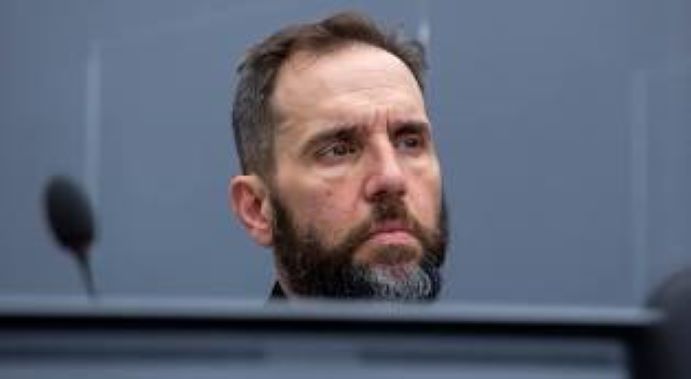 The Washington Post reported that Jack Smith, the special counsel, has subpoenaed local officials in Michigan, Wisconsin and Arizona, following reports they had tried to install fake electors favoring Donald Trump in the 2020 election. Smith was appointed recently when it appeared nobody in the Justice Department had any heart for this line of work. I like three things about him – he is listed as having done his undergraduate work at Oneonta State (N.Y.), his Pacino-esque beard and eyes; and his most recent job was in the Hague, prosecuting war crimes. He should feel right at home in this assignment. 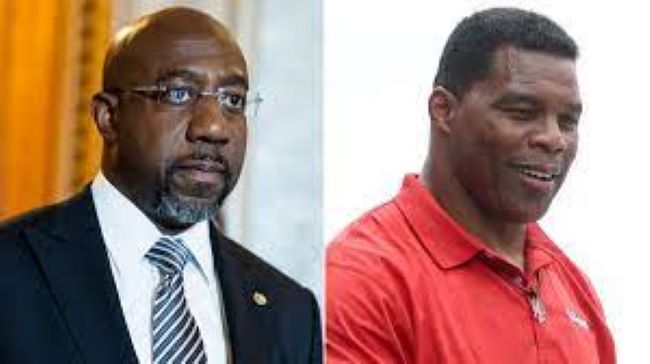 OH, AND THEN THERE'S THIS: Sen. Raphael Warnock, minister and follower of the the tradition of Rev. Dr. Martin Luther King and John Lewis, ran for a full Senate term against Herschel Walker, who once followed his blockers on a football field. Late Tuesday evening, the new Georgia narrowly chose Rev, Warnock. I like this day. The Dutch players were technically strong, physically strong, mentally strong, as they beat the United States, 3-1, Saturday in the World Cup.
In recent years, American players have run into Dutch players, sometimes literally. They know how sound the Dutch are. Virgil Van Dijk, 6-5, 203 pounds. Denzel (!) Dumfries 6-2, 174. Cody Gakpo, 6-4, 172. Memphis Depay, 5-10, 168, and solid. And that keeper, Andries Noppert, all 6-8, 205 pounds of him. Welcome to the knockout round of the World Cup. Americans may be wringing their hands – looking for scapegoats, blaming the coach--for losing in the Round of 16 but they need to remember: the U.S. produces great athletes in so many sports, and the progress in recent decades is encouraging, but this time the U.S. ran into a top-ten soccer nation. The Americans came out smoking, and Christian Pulisic had an early shot on goal, but it was swatted away. his velocity appearing to be 75 percent of normal. This told me his pelvic injury last Tuesday was still hampering him. Fans may grumble that manager Gregg Berhalter kept Pulisic in for the full match, a tribute to Pulisic’s skill and his drive, but Pulisic was not up to his own level. (Did Berhalter miss the chance to sub for a subpar Pulisic? Did he not react to the Dutch offense aiming at the flanks? Did he fail to control the huge Welsh sub who dominated the middle in the first match? Fans are making a list.) The big Dutch people took a lot out of the Americans. The U.S. was trailing, 1-0, in the final minute of the first half, clearly dragging, as they urged themselves to one more attack. I saw Sergiño Dest shaking his wrists, as if trying to prod himself to keep moving, as the Americans pressed for a late goal, but the Dutch scored against the weary Yanks just before the first half ended and the Americans never caught up. Dest was born to a Dutch mother and American father, and grew up near Amsterdam, but was not funneled into the Dutch academies where prospects are taught. The Netherlands is known as the best soccer nation to never win a World Cup, even as they modernized soccer with a smart geometric tiktok-passing style. When Dest had to choose whether to play under a Dutch passport or an American passport, he went for the better chance to play for a national team, in a World Cup. The U.S. is trying to catch up, producing admirable teams that reached the knockout round in 1994, 2002, 2010 and 2014 and now 2022. A musty mom-and-pop organization in the early 1980s, the federation has been seeking U.S.-based Latino players learning the game from their elders, and African-American players who take to the sport. The best example is DaMarcus Beasley, who could dunk a basketball from his adult height of 5-8. He was teased in his neighborhood in Fort Wayne, Ind., because he preferred soccer, but he became one of the great American players in the past generation. When the U.S. World Cup team visited the 9-11 memorial in New York City or the DMZ between North and South Korea, Beasley gave the most thoughtful insights. And in the 2010 match with Algeria, he was a sub in the 81st minute, his speed opening up the field for the game-winning fast-break goal. The U.S. continues to attract players of color – Cobi Jones, with his 164 caps, and Earnie Stewart, another Dutch import, plus Eddie Pope, Tony Sanneh, Oguchi Onyewu, Maurice Edu, just off the top of my head. But other great sports – football, basketball and even baseball, growing more white -- also attract Black athletes. As American soccer players continue to move to Europe, with its lucrative salaries, and as the World Cup blasts over the tv in the U.S., the point will not be lost: This is a great sport, attracting Tyler Adams and Christian Pulisic and all the other charismatic U.S, athletes. But for the foreseeable future, the U.S. will have to raise its game to confront world powers like the Netherlands. On the 12th anniversary of the Great Soccer Scam, the World Cup ended Group Play, which sounds like something in kindergarten.
However, FIFA ain’t no child’s play. The reason this World Cup is in Qatar (and was based in Russia in 2018) is because Sepp Blatter, the head goniff of the time, presided over a fixed election – based on packets of $100 bills being distributed to delegates-on-the-take, on Dec. 2, 2010. As a result, we have just had two weeks of group play in stadiums plopped up all over Qatar—not exactly a scenic and historic World Cup where stadiums are based in, let’s say, Rome-Florence-Milan-Turin-Naples-Cagliari-Genoa-Bari-Udine-Verona-Bologna-Palermo, as in 1990. One match Friday was held in Stadium 974 –sounds like some ticking desert once used for atomic testing. That said, Group Play in Qatar had its moments, and now the U.S, is playing the Netherlands at 10 AM Saturday in some stadium. The Yanks have a chance to win, according to Jaap DeGroot, famous Dutch sports columnist. (Jaap once fixed me up with an interview in Genoa with Ruud Gullit, magical Dutch player, so I say he knows his stuff.) The hopes of the U.S. depend on Christian Pulisic recovering from a pelvic bone bruise (this hurts even to type) suffered Tuesday in a goal-line collision after he had nudged in a crucial goal. The progress of the U.S. might be one of the major themes of change in the World Cup, even though the U.S. has not been overly impressive – Eleven Players in Search of a Striker. One of the best results in Group Play is the total of seven victories by African teams; the previous total was four. Senegal and Morocco made it into group play and Cameroon, Tunisia and Ghana all had their moments. Cameroon beat Brazil, 1-0, on a late goal Friday but it was not enough to move into the knockout round. Overall, African fans made this World Cup buzz with their upbeat rooting and bright costumes. I loved every view of Senegal’s coach, Aliou Cisse, (he’s got Richard Pryor eyes), the star of the 2002 surprise team, and Cameroon’s coach, Rigobert Song, with his long black sport coat on the sidelines, looked like a latter-day Johnny Cash (“The Man in Black.”) Another high point has been the pair of JP Dellacamera, longtime American broadcaster, and Cobi Jones, the all-time American leader in caps (international matches). Other pairs talked too loud and too much, with overkill of professorial intonations – TMI -- but JP and Cobi maintained conversational level and did not overload with details. Cobi never, never, brought up his 164 caps, but he could pick up subtle changes on the field – how Luka Modric, field leader of Croatia, shifted gears, moved the ball around, played offense and defense. One favorite moment: Among the cast of thousands in the Fox broadcast team was Carli Lloyd, recently retired star of Women’s World Cups and Olympic Games. In a halftime blather-fest, the screen showed a player totally missing a wide-open goal, and Lloyd blurted, “I’d knock that in.” Her male counterparts howled at her proud-jock comment, but nobody disputed her. After a while, the games tended to blur. Germany and Belgium both seemed to be running in quicksand, and are gone. Japan and South Korea showed game poise and heart. Our esteemed regional neighbors, Mexico and Costa Rica, were way past it, and Canada did not look anything like the squad that cuffed the U.S. around during qualifying. Brazil and Argentina, France and Spain are still around. I miss the Azzurri and the Italian anthem. Is it really a World Cup without Italy? Then again, maybe they’ll qualify in four more years. Heck, everybody qualifies. The current boss of FIFA, the shifty Gianni Infantino, has engineered a change from 32 qualifying teams to 48 teams in North America in 2026. Y’all come. As I type this, 16 hours before match time, the United States is still in the World Cup. In the modest World Cup history of American men’s soccer*, there is always room for something new. This year’s memory may very well be how Christian Pulisic propelled (a) the ball and (b) himself into the goal for what became the only score as the U.S. beat Iran and advanced to the knockout round. Pulisic was hurt, barely hobbling off the field and going to the hospital rather than playing in the second half. The overnight word was that he had X-rays of the abdomen – no speculation about whether he would play again in this World Cup. For now, Pulisic’s turning himself into a human bowling ball could become the stuff of legends – Willis Reed hobbling onto the court just before the final game as the Knicks beat the Lakers in the 1970 NBA finals and Kirk Gibson limping up to pinch-hit a homer for the LA Dodgers in the 1988 World Series. Pulisic had been wearing a serene smile in the minutes before the match, as the American and Iran teams marched out for the ceremonial playing of the anthems. I have a theory about the new look on Pulisic, who has often been the captain, based on his many vital goals. Instead, Coach Gregg Berhalter chose Tyler Adams to be the captain in this World Cup. Adams, an active midfielder, has been the core of the team in these three games, showing up everywhere, a man on a mission. He also displayed a maturity worthy of a diplomat when lectured by an Iranian reporter in a press conference the other day, after some knuckleheads in the U.S. federation had altered a version of the Iranian flag, just what was needed in dicey times.) (The poor Iranian players had a hollow look to them, because of the political overtones back home, rumors that Iranian women were being photographed by their government for wearing western fan outfits in the stands. And later there were concerns the Iran loss could be turned into more unrest, perhaps even scapegoating the players.) By contrast, Pulisic’s relaxed demeanor was noticeable on tv – a major difference from the twitchy look he carries around with Chelsea, where he rarely gets to play much. In the first two games in Qatar, in his first World Cup, Pulisic set up the only American goal in the first game, but his play was spotty, and his corner kicks were ineffective. Had people been over-rating him? I began to wonder that myself. But in Tuesday' third game, Pulisic seemed more centered, getting in the right position to score the goal before crashing into the keeper and the ground. Pulisic’s goal came in the 38th minute, with 52 official minutes left, and an agonizing 9 more of extra time, with the TV reminding us, basically every minute, that the U.S. could advance only with a victory, not with a draw. In a simultaneous match, England was on its way to beating Wales, 3-0, which meant Iran could have advanced with a draw, whereas the U.S. could only advance with 3 points from a victory. The other American players saved the day in the steam bath in Qatar, with players on both sides limping from cramps as well as the normal knocks. The World Cup did not always hold simultaneous third games in each group. In the first World Cup I covered, 1982, West Germany and Austria played in Gijón, Spain, after Algeria’s match was over, and they knew a 1-0 victory by West Germany would allow both teams to advance, so they waltzed and they waltzed, thereby screwing Algeria. That 1-0 result is now known as the Disgrace of Gijón. The U.S. has had other operatic third matches in World Cup play. In 2002 in South Korea, they were drubbed, 3-1, by Poland but at the same time in another city, a referee doled out two red cards to Portugal, making it possible for the host team to advance, along with the Americans. "This is a very good day for U.S. soccer," said Brad Friedel, the American goalkeeper, who added: "This was also a very lucky day for U.S. soccer.” In 2010, the last of the eight World Cups I covered, the U.S. teetered into the third match with Algeria, needing a victory to advance. In the first minute of extra time, the U.S. staged a full-court break, with keeper Tim Howard heaving an outlet pass to Landon Donovan, who advanced the ball to Jozy Altidore who centered the ball to Clint Dempsey who banged a shot off the keeper, but Donovan followed the ball and scored the goal. Instant history. Now there is a new landmark – Christian Pulisic’s tumble into goalmouth, and into history, or at least into a match with the Netherlands on Saturday. (*--the American women won their championships early and often, and now other nations have caught up, and good for them.) *** (Below: Tyler Adams, U.S. Captain. Could be secretary of state. Check out his thoughtful longer version online.) Keylor Navas has probably never had a day as bad as Wednesday, in the World Cup, when he played goalkeeper for Costa Rica against Spain, and lost, 7-0.
Not much of it was Navas’ fault -- the ball kept coming at him from many angles – but a keeper always takes these things personally. Navas is no stranger to Spanish soccer. From 2010 to 2019, he played goalkeeper in Spain, most of it for Real Madrid, the perennial champ. Then he moved to Paris St-Germain, the powerhouse of France. Any soccer player in Spain knows Navas, or knows of him – a modest-looking bloke, with a silvery thatch of hair, who does not appear to be 6 feet, 1 inch tall, as listed. Near the end of the one-sided match, I hoped the tv camera would stay with Navas. I often think of the second World Cup I covered, in 1986, in Mexico, when Argentina and Italy met in the first round in Cuauhtemōc Stadium in Puebla – a nasty game between two masters of infighting. Yet at the end of a 1-1 draw, Diego Maradona of Argentina was hugged by many of the Italian players – a salute to his impact on the Napoli team in the Italian league. I witnessed a tactile camaraderie among highly-paid players on the two squads, who had been booting each other around all afternoon, and rolling around in gestures of mortal pain. On Wednesday, a knot of Spanish players immediately jogged over to the Costa Rica goal and hugged Navas or patted him. What they said was among them. But the body language showed their respect for his long career on European clubs and with the Costa Rica national team. It’s a lesson to fans in the stadium and watching on television. Athletes play hard, and sometimes it gets nasty, but when the whistle blows, quite often the respect is tangible. (Please see testy analysis by George Wilson and John McDermott, below) Soccer is a cruel sport. Always was, still is. One team can plan well and play well and take a lead that has its fans dreaming of the old soccer cliché, “a just result.” Then one mistake can nullify much of the careful work. That is what happened with the United States in the World Cup on Monday – or rather, that is what the U.S. did to itself. One sloppy tackle turned a victory into a 1-1 draw, setting up the next week of apprehension and doubt and maybe even fear. Could it happen again? Athletes have to fight off that feeling, but it is not easy, knowing how easily a lead can vanish, with the flourish of a pair of soccer boots. I was sitting in front of the tube, watching the U.S. play its best soccer in many months, and I was trying to put together the reasons this was happening. I was giving some credit to the coach, Gregg Berhalter, who has not won over hard-core fans yet -- judging from some of the snide remarks on the Elon Musk Daily Blatt -- despite Berhalter's lifer pedigree as a stalwart on the 2002 quarterfinalist team. Berhalter had a huge hand in choosing the squad, and the starting lineup. I learned this around 2010 when I spent a few days with Bob Bradley as he prepared for the 2010 World Cup. I saw how he and his assistants (Jesse Marsch, now of Leeds United), had daily contact and tapes from scouts and spies and American players overseas. Coaches know who is on a roll, and who is not, and very often why. Listening to the grapevine, Berhalter recalled Tim Ream, a defender who seemed to have fallen out of favor with the national staff. However, Ream, 35, was being reborn on the Fulham team in the Premier League of England, playing alongside the outside left back, Antonee Robinson, 25 and lanky and ambitious, with his American passport and his Everton roots. Robinson likes to take off downfield, sometimes winding up near the goal, assured that Ream likes to stay at home. The pair of Ream and Robinson is not exactly Franco Baresi and Paolo Maldini, the great back-line engine of the AC Milan team and the Italian national team of the 1980s-1990s, but it’s an honor to pop up in the same conversation. Coaches make other decisions, the way Berhalter did in naming Tyler Adams captain -- a tribute to Adams and also a favor to Christian Pulisic, who labors under the terrible injustice of being labeled the face of the current U.S. generation. Pulisic is too flightly, too moody, to be a leader. The decision by Berhalter helped both players. Adams played a 360-degree sheriff in midfield while Pulisic free-lanced, slipping an elegant little forward pass to Tim Weah, who found a corner of the net for a 1-0 lead. Decisions like this made the U.S. dominate well into second half, with . Gareth Bale, 33, playing in his first World Cup, seemed to be puffing hard with every breath. But Bale did not excel this long without inner resources. In the 80th minute, Bale materialized in front of the U.S. goal and defender Walker Zimmerman, knowing not to give him space, slid recklessly into Bale’s feet – certainly worth a penalty kick at that spot, at that time. Bale, with the poise of a long-time star, waited for the keeper to commit, and then put the ball high and to the right. The sizeable red-clad Welsh section began to sing. Well, of course they sang. Take it from a long-time visitor to Wales, everybody in Wales sings, whether Bryn Terfel from Pant Glas or Tom Jones from PontyPridd, or Shirley Bassey from Cardiff or Bonnie Tyler from Skewen, near Swansea, whether in a church chorus or an eisteddfod, a regional session of music and poetry. Every Welsh person in Qatar or far-away Wales no doubt sang, as Wales drew 1-1, pretty much ruining the start by the U.S., as U.S. fans yelp at Berhalter: where was Gio Reyna? Now both squads have to take on rebuilt England and unimpressive Iran -- no guarantee of advancing to the second round, no promises of a "just result." * * *
(Guest Commentary by George Wilson (our grandson) To start I think that Wales bringing on Kieffer Moore changed the game and allowed them to hold the ball up the field, something they failed to do in the first half. This completely bewildered Berhalter and he didn’t seem to have an answer to it, which shows from the second-half stats. We were outplayed and probably deserved a draw. It’s frustrating to see a coach whose only experience comes from the Swedish Division and at the Columbus Crew get out-coached by the opposition simply putting a big guy up top. Another indictment of the Berhalter system is that our only shot on goal yielded a goal -- this is not sustainable for any sort of success. We will not win anything if we cannot create chances and test the keeper. Playing the ball wide to Pulisic for him to cut inside and play a ball in simply cannot be our only avenue of attack. On that note -- why is Pulisic taking our corners? His delivery really leaves a lot to be desired and I just can’t imagine he’s the best choice for them. In a lot of ways, Berhalter is emblematic of the USA - he’s flashy, knows the right people and can sell a big idea but upon delivery it is immediately clear something is off. He’s the McKinsey consultant of soccer with a fun shoe collection. His focus on positive reinforcement places him closer to BF Skinner than to Joachim Löw. So now, with England looming on Friday the question is what tweaks will Berhalter make? I expect an over-correction on his part. The only thing that gives me the slightest glimmer of hope is that Southgate is nearly as inept as Berhalter. I’d predict a loss to England barring several moments of divine intervention. The World Cup may take our minds off the scandal of FIFA and Qatar. Momentarily.
Before the first game began Sunday, I put out a call to one of my best soccer advisors to get his thoughts about this World Cup. That would be my grandson, George Wilson. He’s a college graduate now, with a good job near home in Pennsylvania, but back in the day his dad and I went out on the lawn and tried to teach him the game. I gave the pre-schooler the hip, and sent him tumbling to the grass, and when he protested, I said that was the point of the game, knocking the guy off his stride, and if you go down, go down like an Italian – I demonstrated with flailing arms and legs, and facial gestures of extreme pain, just like my favorites on the Azzurri. George seemed intrigued by the concept of faking pain. Welcome to calcio. As a tyke, George challenged me to play one of those early FIFA electronic games. As soccer spread through the younger generations (much to the horror of my aging cadre of sportswriter buddies), George knew all the players and all the uniforms and all the stadiums depicted on the screen – but more importantly, his reactions were so much faster than mine, that it was a mismatch. “Pop, you’re not even trying,” he said. But I was. Nowadays, I rely on George (and his dad) for split-second on-line reactions to real games on their screens and mine. His dad roots for Christian Pulisic, from nearby Hershey. George roots for Liverpool and their totemic player Mo Salah. Alas, Mo’s Egyptian team was eliminated by Senegal in the African playoffs. On Saturday evening I asked George for his current thoughts about this World Cup before the U.S. opens with Wales on Monday. He wrote: (By George Wilson) “I want the US to do well but I really don’t have too much faith in Berhalter. I think he was a nepotism hire and that with the players he has at his disposal he will continue to underperform. I think the core group of young guys can still get results but I fear they will be out-coached by more flexible teams. “ If I had to name teams I think could be surprise performers or ones that are good to keep an eye on, they would be both Uruguay and Ecuador. Uruguay is pretty easy to explain, a young core of solid players and a few really exciting talents among them. “Ecuador is in a similar position, they have some really solid players who could easily pull some upsets. The likes of Estupinian, Caicedo and Hincapie are all top talents and will likely be on some of the larger European teams in the coming seasons. “I also think Brazil or Argentina will win -- barring a major collapse they appear to be in the best shape at this point. If France hadn’t been decimated by injuries, I’d have them in contention, too “I’d add that my dark horse winner call would be Uruguay. They have a shockingly accomplished team. In goal, defense, midfield and attack they have an amazing team and with a few moments of inspiration, I don’t see why they couldn’t do it.” *** (I noted George's choices for outsider teams but also said I had more confidence in Gregg Berhalter, the manager and former World Cup stalwart.) In a few hours after I typed this, Ecuador would play Qatar in the opening match. I will root for Qatar to hold a safe and exciting set of games. For the moment, maybe we can put aside the scandal of how Qatar (and Russia) came to host the World Cup (packets of American $100 bills, handed out in lobbies of FIFA meetings.) But let's never forget Saturday's self-pitying bleat of FIFA overlord Gianni Infantino, who portrayed himself as a beleaguered victim, bleating that he had nothing to do with the scandal. Sounded familiar. . We have one of those over here. In the meantime, I’m monitoring the World Cup. I welcome any comments on any game or any player -- on this site -- from some former players and current fans. Best, GV (Above: One of the greatest goals ever by the U.S., vs. Algeria, 2010, South Africa -- involving four epic players -- Howard, Donovan, Altidore and Dempsey.) -------------- The American men’s soccer team will play Wales on Monday in the World Cup, which comes around every four years. (The four-year gap is part of the charm of soccer, although the assorted reprobates who run world soccer hallucinate about a more frequent World Cup.) For the fast-growing multitude of Americans who love and understand soccer, the common wisdom used to be that as more young American prospects gravitated to the fast leagues of Europe, the U.S. national team would become a powerhouse. But right now, I’m not sure about 2022. As a witness to the great goal by Paul Caligiuri in Trinidad in 1989 that put the U.S. in the 1990 World Cup to the bravo defense by goalkeeper Tim Howard in the gallant loss to powerful Belgium in 2014, I saw a quarter century of mostly progress. National soccer teams are essentially all-star teams, recalled from clubs that provide large salaries and top-level experience. The best players are called up to the national squads, trying to shrug off jet lag and over-exertion in brutal club schedules. (Think of world soccer as an incessant giant hamster wheel.) The evidence of the past two years of qualifying matches is that the young American male players have been banged up in club play, and when put together they do not display enough stamina, cohesion and smarts. This was evident in the qualifying tournament for the 2018 World Cup, when all that American effort and money and talent came to a screaming halt. After six straight qualifications in the main World Cup, the U.S. was reduced to a raggle-taggle group of boy soldiers, sent into battle over their heads against regional opponents, ultimately pounding the scruffy turf in frustration after the loss in Trinidad. (Stuff happens. Italy – the Azzurri – four-time champions – will not be in Qatar, much to the mortification of the Italian tifosi including me.) The Americans did get through this time, but with a revolving roster of flashes and hopefuls, riddled by injuries, without a scintilla of consistency during the qualifying. Canada had a better cohesive team during qualifying. I don’t necessarily think any of this is the fault of Gregg Berhalter, the American coach, a fit and modern lifer who was almost a hero in the 2002 World Cup, except that a German defender managed to drop his arm in position to stop Berhalter’s up-close shot. Berhalter knows the game but he is banking on players who should be nearing the peak of their careers, like Christian Pulisic, who has not been getting enough time, on a fast Chelsea team. This accumulation of injuries and benchings and transfers lead to my conclusion that the best days of American soccer just might be – I hate to say this -- In the past. This nostalgia may sound familiar to New Yorkers, in particular -- Mets fans talking about Ron Swoboda’s catch in 1969 or Mookie Wilson’s glorious little dribbler in 1986, or Jets’ fans living off legends of Broadway Joe Namath winning the third Super Bowl back in, for goodness’ sakes, Super Bowl III in 1969. Soccer glory days include the goal by Joe Gaetjens, a Haitian national in looser eligibility times, helping the U.S. beat England – England! – in the 1950 World Cup. Then, after nine straight absences from the World Cup, the U.S. began a string of success, starting with a thumping shot by Caligiuri, one of the first Americans to get experience in Europe. But from 1989 through 2014, there were glorious moments. 1990, Italy - The U.S. played two stinkers, but in Rome, they almost beat Italy, except that Peter Vermes’ shot plunked off the Italian keeper’s posterior. 1994, USA – The Yanks qualified for the shootout round, but Tab Ramos had his eye socket fractured by a cheap-shot elbow, during a loss to Brazil. 1998, France– A total stinker, from coach to players. Don’t ask. 2002, South Korea – In the shootout round, the Yanks took apart Mexico -- dos a cero, now a legendary score in that rivalry – engineered by Manager Bruce Arena and wily midfielder Claudio Reyna. 2006, Germany -- Blood and three red cards and one of the best games ever by keeper Kasey Keller, in a draw with Italy. 2010, South Africa – Maybe the best single play ever in the U.S, modern era: Needing a goal to get past wily Algeria, the U.S. launched a desperate fast break, by some of the greatest players ever to represent the U.S. – keeper Tim Howard pitching out to Landon Donovan who dribbled and release a Maradona-esque pass to Jozy Altidore who centered the ball to Clint Dempsey, who banged a shot to the keeper, who deflected the shot to Donovan, who put in the rebound and set off the raucous dogpile on the field. 2014--- Tim Howard nearly beat Germany and Belgium, two of the best teams in the world. However, in 2018, the Yanks were clueless in the qualifying round, and happy talk commenced about the future. With all due respect, nobody on this team has done anything on the scope of a couple of dozen American stars of the golden quarter century, like Cobi Jones or Brian McBride or Eddie Pope, just to drop a few more stalwarts. One strength of the glory years was goalkeeping, a position dependent on athletic prowess, size and wingspan. Tony Meola had baseball offers, Kasey Keller had the fluid swagger of a shortstop or a tennis champ, Brad Friedel had an open offer to walk on to the great UCLA basketball squads, and Tim Howard was a known dunker in high school hoops in New Jersey. This year’s trio does not remind me of any of them. The field players are full of brilliance – but more potential than current. Pulisic carves up regional foes in qualifying but has been shunted in the best league in the world. Gio Reyna, injured much of this past season, has the most exquisite moves on the squad, a bit flashier than his dad, Claudio, who held the glory generation together. Another son-of is Tim Weah, whose father is George Weah, the greatest Liberian player, who never got to the World Cup, now the president of Liberia. Two top midfielders are Weston McKennie (Juventus, Italy) and Tyler Adams (Leeds, England). I enjoy watching Antonee Robinson (Fulham, England) a left back who was born and raised in Everton, England, and knows how to romp downfield. I also like Walker Zimmerman, from Major League Soccer, as a tall, rugged enforcer in the back. Two more names -- Brenden Aaronsen, a midfielder from Leeds, arms flying like a human windmill, a born disrupter, and in the midfield, and Kellyn Acosta, a veteran midfielder from the MLS, with a feel for unobtrusive aggression. Many players on the current American squad have more potential than the median of past U.S. World Cup squads. But as for the demands of this quadrennial spectacle, the most popular sports event in the world, this team has not done anything, yet. * * * FOOTNOTE FROM THE GREAT ROGER BENNETT, OF "MEN IN BLAZERS:"
One quick note: There is a lot of discussion about how we should not worry about this tournament because our squad is designed to peak in 2026. I want to go on the record and say just how much I hate that. World Cups come every four years. They are all too rare to waste. This is not an NFL team where you control draft picks, player development, and salary cap room. World Football is unpredictable. Injuries and form are uncontrollable. The World Cup is a gift. All of us are only gifted a handful of them in our lives. You go hard. You go now. Or you go home. Never write one off. Make memories while you can. Take nothing for granted. Savor every bloody second. (ALWAYS LISTEN TO ROGER--GV) https://mail.google.com/mail/u/0/#inbox/WhctKKXgtTcCXfnqkLtSGQKjcgQdDNtvtBxJpbVsvpvbBdncZmLzPkRTncKBXvCVZQxNkBQ While some of us were dozing off, and others were gaping at the tube, and Donald Trump and Kevin McCarthy were sleepwalking through their own personal nightmares, a bit of America resurfaced Tuesday night and well into Wednesday.
A portion of the United States asserted itself, remembered its manners and its civic lessons and the old movies, maybe overdone, when Americans tried to act like good guys and not ignorant bullies. One example was Tim Ryan conceding his senate race to J.D. Vance in Ohio, emphasizing that this is the American way, to accept defeat, honorably. The final results will take care of themselves in the new Congress, but despite the threat of Trumpian storm troopers, voters spoke overwhelmingly for the right of women to have a say about their own bodies, and kicked out a few bad actors, and pretty much ignored the grotesque bully lurching around some somber ballroom. Now it is time for Americans to echo the words of Gene Wilder, playing a Polish rabbi out in the American west in “The Frisco Kid,” who declines the chance for vengeance on a murderous bad guy, and urges his congregation, (in a thick Yiddish accent), “Would somebody please show this poor asshole the way out of town.” (Not to gloat, of course, but while Trump lumbers off the stage to face all those inquiries, he could take Kevin McCarthy with him – the “leader” who let Trump stage an insurrection and then crawled down to Florida to kiss his…ring.) I feel particularly bad for a few Democrats who were voted out Tuesday night – Ryan in Ohio plus former Navy commander Rep. Elaine Luria of Virginia, who so impressed during the Jan. 6 hearings, and Rep. Sean Patrick Maloney of New York State. Also, Republicans Liz Cheney and Adam Kinzinger, who were already gone, having left an image of conscience. Others will surface. Voters have asserted themselves. The country has two years to put on the brakes and carefully move into a more rational lane. President Biden has had a better election than anybody could have imagined. However, from reading Peter Baker’s nuanced and knowing article on President Biden a few days ago, we need a new look two years from now. Right now, on very little sleep, now that some bullies and know-nothings have been exposed, I’m working on a ticket for 2024. At the moment, I’ve got Tim Ryan and Stacey Abrams or Val Demings. Or vice versa. Meantime:  (Laura Vecsey was a terrific news reporter in upstate New York even before she became a sports columnist. She liked to tell me about the stuff a town clerk told her, or a farmer knew. She is revisiting her old reporting grounds as part of her new site, "You Know What I Mean?" ) By Laura Vecsey A Whole World In Your Own Backyard The Town of Malta seems a pretty boring place, until ... LAURA VECSEY The world, we all pretty much know, is a big place. Lots of continents, hundreds of countries, seas and oceans, mountains and deserts, billions of people. The enormity of the world makes it exotic — a feast too big to eat even for the most insatiable explorers and travelers. So why then I am talking about Malta, a nondescript town on a sandy patch of land in upstate New York’s Saratoga County? Ask my friend Lisa Smith. Last week, from her Japanese-Zen influenced home that fronts Willapa Bay in serene Seaside, Washington, Lisa Smith read a post I had written here about buying your first home. It was there, buried in the comments section, that the ever-curious Lisa Smith noted that my spouse, Diane, noted that the first home she ever bought more than 35 years ago was a townhouse in Malta. Malta! If that name stirs any sense of excitement, maybe it’s because the town of Malta carries the same name as the country of Malta, that archipelago between “Sicily and the North African coast — a nation known for historic sites related to a succession of rulers including the Romans, Moors, Knights of Saint John, French and British.” That Malta, set in shimmering green-blue waters, does conjure centuries of world history and human migration. So the name “Malta” rightfully triggers the imagination, especially for curious people like Lisa Smith, an inveterate world traveler who lived in Abu Dhabi and scaled an NYU program there. Lisa has also toured India, graduated from Harvard, ran public TV radio and stations in Seattle and Oregon. She’s also been long paired with the award-winning journalist and book writer Buzz Bissinger. In other words, Lisa Smith has a nose for stories, as much as she possesses a delicious little streak of sarcasm. So what was I to make of Lisa Smith’s quip about the apparently insignificant town of Malta? More important, what was I going to do about Lisa’s pithy remark? I decided that I would take it as an invitation. The Saratoga County, New York town of Malta, it turns out that, is just like all other places in the world: Just another name on a map and yet also a place where there’s a lot more than meets the eye. In fact, the seemingly nondescript town of Malta can make the case that any named place on Earth is its own world. Even more strange, it’s one of the places that taught me, as a newspaper reporter and writer, to look harder and longer and you’ll be surprised what you find. In addition to Malta being the town where Diane bought her first home, Malta was a town I covered for the Albany Times Union. In the late 1980’s, Malta was a part of my news beat in Saratoga County. My job to know what was going on there, and to dig out stories, and to monitor Malta’s local government. This is a townhouse in Malta’s Luther Forest just like Diane first bought. For me, covering Malta served as a primer on how America planned, regulated and protected its citizens and natural resources. I saw how conventional and orderly local governmental bodies carried out their duties. How town budgets were negotiated and passed. How water quality, fire station grants, street plowing and extensions were managed. In Malta, I saw how developers had to demonstrate the impact new housing developments would have; how commercial development was cautiously promoted, how senior citizens would get access to services. And based on what I heard about in the town board meetings, I’d go out and explore for further background or news feature stories that the Times Union would run to show how suburban America was being built out. That included writing about Luther Forest, a section of Malta that was the site for a new housing development where Diane — who I didn’t know at the time — had bought her first house! In 1945, rocket testing was done at the Malta site hidden deep in Luther Forest. The Luther Forest housing development was a planned community, which meant it had a homeowner’s association and a general manager to keep the place running tip top. The manager’s name was Barney Granger, a lanky and taciturn man I spent a lot of time trying to chase down for information or a quote. It wasn’t easy. Barney Granger was always hellbent on riding away from me in a golf cart or his green Ford Ranger pickup. But this quirky memory of Barney Granger in his Ford Ranger is just a little sliver of the real story of Luther Forest. Like a lot of places that seem to have no true personality or any easily identifiable points of interest, Malta’s Luther Forest is riddled with intrigue — not that you could easily tell without doing a little digging, or sky gazing. But the acres of towering pine trees, and the fenced-off areas that warned about criminal trespassing, were a clue. It turns out that the “boring little town of Malta” is actually a nexus of American history from World War II to the Baby Boom era of suburban sprawl to today’s Tech Age of semiconductors and massive retail warehouses. The center of the Malta story is how the 7,000 acres of pine forest started in 1898 by a man named Thomas C. Luther turned into a rocket test site for the U.S. government in the 1940s, after Luther gave some of the land to the U.S. government to serve as a site to test rockets and rocket fuel. That’s when things got really interesting. After WWII, the U.S. started a secret military intelligence program called Operation Paperclip in which more than 1,600 German scientists, engineers, and technicians were taken from Germany to the United States. That included Wernher von Braun and his V-2 rocket team, plus former members, and some were former leaders, of the Nazi Party. The goal of the Operation Paperclip was to gain military advantage during the Cold War and during the Space Race. In 1945, Luther Forest became the home of the Hermes Project Rocket Test site. Von Braun’s team and 400 General Electric scientists worked at the Malta Rocket Test Station to help the U.S government improve upon Germany's expertise in missiles. That lasted until the 1960. Von Braun, who eventually became the director of NASA's Marshall Space Flight Center and was the chief architect of the super-booster that launched American astronauts to the moon, came to Malta for weeks at a time. When he came to Malta, locals were said to hear the ground rumble and smoke plumes filled the air. It’s said that Von Braun enjoyed his time in Malta, because Luther Forest reminded him of Bavaria. In the 30+ years since I first covered Malta and learned about Operation Paperclip, Malta has further enhanced its standing as the nondescript little town where big things happen. Chip manufacturer Global Foundries’ 1,400-acre campus in Malta, New York. The Luther Forest Technology Campus is a $3.5 billion development that spans 1,400 acres. It is home to Global Foundries, a multinational semiconductor contract manufacturing and design company incorporated in the Cayman Islands and headquartered in Malta. “The company manufactures silicon chips designed for markets such as mobility, automotive, computing and wired connectivity, consumer internet of things (IoT) and industrial.” Global Foundries has brought hundreds of jobs and boosted the development of more suburban housing in Saratoga County. It’s also opened the doors for Amazon to propose a new million-square-foot warehouse on 235 acres south of the Global Foundries headquarters. That plan for an Amazon warehouse was scrapped this year, but not before the little town of Malta and its local planning board had once again flexed its muscle against the big boys from a multi-national company. In other words. Malta? There must be a story there. Right, Lisa Smith? Here’s a photo of the curious Lisa Smith reading in her beautiful home on the coast of Washington State. It was taken by the Daily Astorian (Oregon) newspaper for a story about how people were coping during the pandemic. If you liked this post from You Know What I Mean?, why not share it? Share Photos Galore online: https://lauravecsey.substack.com/?utm_source=substack&utm_medium=email 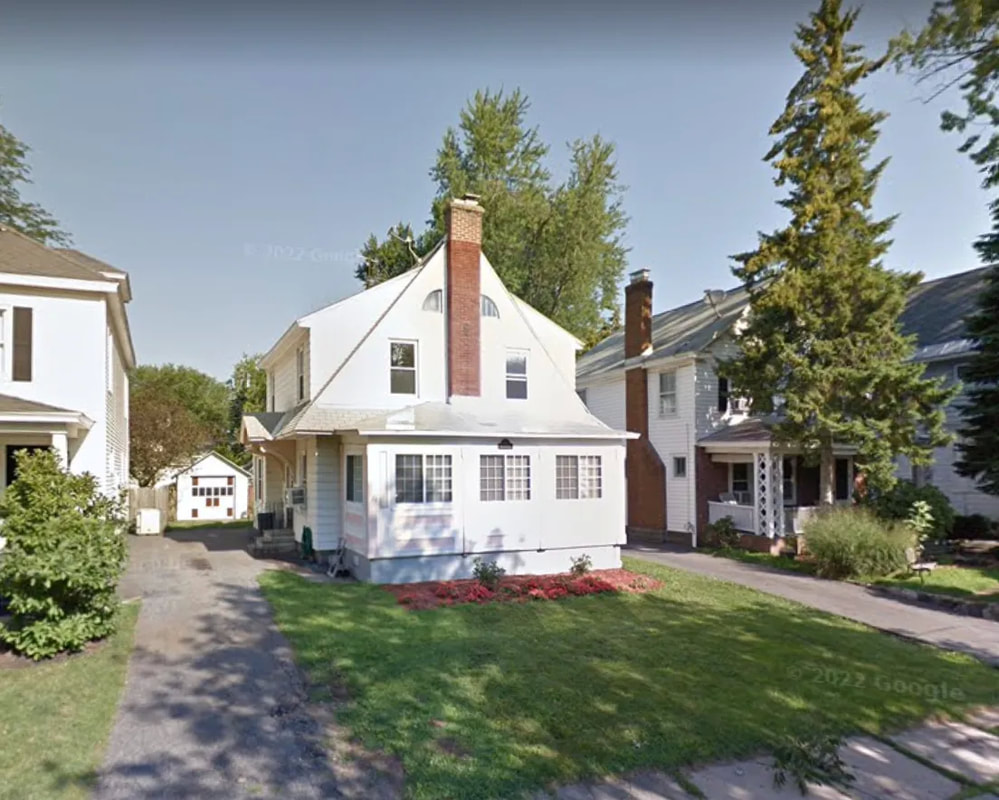 (Laura Vecsey's first home) (Laura Vecsey's first home) (Laura Vecsey, former sports columnist and political writer, still writing after all these years, now often about real estate. Laura has written about the disparity of homes for young people starting out. That touched my wife and I who had jobs and our own home in our early 20s, because it was possible. Please read Laura's piece and and make comments on her site. GV.) The odds are unfairly stacked against the next generation of our kids LAURA VECSEY NOV 3, 2022 I keep running the numbers, and looking at the markets, and taking into consideration the reality of being 60 with a 24-year-old daughter who makes minimum wage and is likely to never earn much more on top of that, and it only further confirms that nothing adds up, and nor will it ever. I don’t think I’m alone. Hardly. All around us, we see 20-something and even 30-something offspring whose jobs options, pay scales and housing needs keep them living at home, or bouncing back home when a roommate flames out or rental costs balloon beyond affordability. It’s not news, yet it continues to be startling. The Federal Reserve is trying to cool home prices with its fourth consecutive jumbo rate hike. More listings are taking price reductions, fewer homeowners are opting to sell now that mortgage rates are over 7 percent. A $300,000 home — which is now below the national median price! — is out of reach for first-time buyers, or any buyers with fixed incomes. That in turn pushes rents higher as more people compete for fewer options, which then pushes a lot of young people back home. That makes what’s taking place a societal buzz kill as much as a financial wack job. Young people are stuck! Parents are stuck, or worried, or frustrated, or racking their brains trying to understand why kids these days talk about van life. If they haven’t exactly given up, they can see they’re being squeezed and left to hold the bag. While there’s been great talk about the flexibility the pandemic caused since workers could go remote and relocate from affluent coastal cities for bigger homes in less pricey environs, I get the feeling that what we read about generally only scratches the surface of the repercussions we’re experiencing from so many cataclysmic events so close together. Today, a real estate article in The New York Times makes plain what we already see. “Historically, first-time buyers made up about 40 percent of the market. But the share of first-time buyers fell to 26 percent during the 12-month survey period, from July 2021 through June 2022, plummeting to the lowest level since the trade association began tracking such data in 1981,’’ reports Ronda Kaysen. The headline was a little bracing, especially since it underscored the way the wealth of white Americans, particularly those around my age, is accelerating the inequity: “Older, White and Wealthy Home Buyers Are Pushing Others Out of the Market” I think I’ve been part of that equation, which is another startling thing to consider. In using our knowledge of real estate, and capitalizing on some ability to invest, and our willingness to move or act on good opportunities, Diane and I have been in markets where housing prices have risen 20 to 50 percent in a matter of three to five years. Seattle. Baltimore. Long Island. Saratoga Springs. The past 20 years has been an explosion of housing wealth, the results of which are finally and dramatically squeezing the American Dream. We considered it our good fortune to be able to use these “tools for wealth” if only to make sure we don’t have to eat cat food G-d willing we live to our actuarial table destination. But it’s all coming home to roost, so to speak. We look out and see the devastating impact high housing costs has had on the lives of a lot of people, including the kids of our friends and families, including the increasing number of homeless people begging for food money on the corners of downtown Saratoga Springs. Meanwhile, this small city continues to attract second and third home buyers who recognize it as a pocket of affluence. That reality only further compels people who can afford good things to aggregate here. Housing has always been a way to self-select your neighborhood, but the impact now is far more exclusionary. That’s sad. That has an impact down to the way the next generations can be part of a community. Having your own home, regardless of how modest or grand it is, really is such an important part of separating from your parents; establishing yourself as an individual; setting up a nest for your own new tribe. It’s the place where you embrace your own life, where you run it and pay for it and agonize over it and fix it and mow the lawn or change a lightbulb or learn how to cook better or …. everything! I can’t imagine my life being the same without the experience I had buying my first home. My first home: A $73,500 Dutch colonial at 731 Hampton Ave. in Schenectady. In 1988 or so, five years after graduating from college, I had moved to Albany and worked at the Times Union newspaper. After two years of renting up here, my partner and I decided to start looking at what we could afford, and where we wanted to be. Not the suburbs. Not in Albany. Not in Troy. We wanted urban but safe and walkable to stuff. Within weeks, we found a Dutch colonial house in the Upper Union section of Schenectady. The house was two blocks to restaurants and shops, and right across the street from Central Park — a huge and lovely public park with a swimming pool, hiking trails, cookout grills, hills and paths and a rose garden. There were hardwoods and a formal dining room, a sunroom and a bright rear den behind French doors. Three bedrooms, 1.5 bathrooms, a level lot and detached garage. It was $75,000, and we paid $73,500, having borrowed $5,000 or $7,000 from my parents and using whatever cash I had to put down. Over the few years we owned the place and lived there, I had such an incredible sense of security, of peace, not because things were smooth-sailing 100 percent of the time but I could always sit on my porch and read a book. I could go in the yard and rake the leaves. I could walk to the park or the library or the deli for lunch. Mortgage rates were over 10 percent back then, so it’s not like the payment was “cheap.” But getting to own something as substantial as a handsome single-family home, and to have such a place to run my life … it was the demarcation point in my life that let me know: I was on my way. To where? That is another question! There have been many houses along the way. We were the kind of high-flying Americans riding the gravy train of the Web 2.0 wave and tech surge to this place we’re all at now — a place where there’s scant little middle ground left between wealth, or at least financial stability, and the cliff people are either falling off or can never climb. It all seems to have pitted us into another division. People who can have their own home, or homes. And people who never will. Unaffordable. Unfair. If you liked this post from You Know What I Mean?, why not share it? Share https://lauravecsey.substack.com/p/buying-that-first-home-a-faded-american?utm_source=post-email-title&publication_id=1147992&post_id=82330057&isFreemail=true&utm_medium=email © 2022 laura vecsey 548 Market Street PMB 72296, San Francisco, CA 94104 Unsubscribe You sent him.
You sent him in 2016 if you somberly assured that Trump was "good for the economy." I know people with money who wanted more money and they saw Trump as a guy who would preserve their kind of order. Money guys. Republican guys. I don't talk politics, or anything, with people like that, these days. The evidence was clear in February of 2016: Trump was a guy who would stand up in a rally and whip up the boosters by whining how people like him couldn't get a break any more. Had to hide their psychic white gowns and mental peaked hats. Trump and his money guys unleased the mob on Feb. 16, 2016. Violence was in the air, in Trump's sneering lament that life was tough for guys like him. He prepared his mob to rush to the Capitol on Jan. 6, 2021, and somehow he encouraged the guy with the hammer to rush to the Pelosi household on Thursday evening, looking for the Speaker of the House or her husband or anybody. Who set up the vigilantes preparing to swarm to the voting stations between now and Election Day? The mobs plan to intimidate people who want to vote, and officials who want to give an honest count of the ballots. You did, many preachers of America, who told their flocks that Trump was a true soldier of Christ, who would fight against abortion, who would approve of Texans to run around with a gun, without even a license to carry it. Who put a target on Nancy Pelosi and her family? The same candidate who put nicknames on the Speaker of the House, using venom he frequently shows toward women. He has sought a reputation for seeking sex with many women, but behind that is a contempt for the entire gender. He cannot tolerate a political opponent, particularly somebody smart and entitled and female. Just the way Trump put a mark on the heckler early in 2016, he encouraged the mob to rush the Capitol on Jan. 6, 2021 -- making Nancy Pelosi a leading enemy. But people who voted for Trump should remember, as the mob picks up its weapons: Trump is good for the economy. 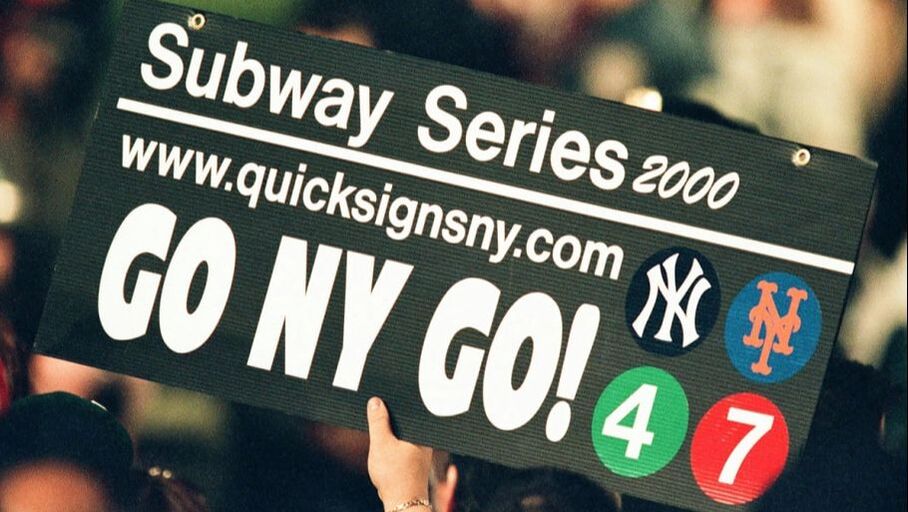 Sorry, Mac, That Train Aint Running Sorry, Mac, That Train Aint Running I have not watched an inning, an out, a pitch, since the Mets disintegrated what seems like months and months ago. I just can’t watch. I gave so much to the Mets all season, probably 125 parts of 162 games. Got nothing left. Philadelphia is playing Houston in the World Series – now the coda to a long and lucrative process, four separate rounds as northern weather gets more iffy. (I know, I know, last year I railed against baseball adopting the basketball/hockey endless playoffs, but this year I give up. The World Series has become "The Finals." Baseball needs to make money so badly that, in the era of Rob Manfred, they play forever, pimping for gambling sites, encouraging people with a gambling jones to put money on each pitch, each swing. After a year of Mets melodrama, I need a break – reading good books, watching the tube with my wife, puttering around the house, seeing our family, at least until the pandemic clamps down again. (Well, not exactly. In the spirit of conscientious bloggery, I must admit I will be watching the World Cup of soccer, in Qatar, beginning on Nov. 20, with the United States meeting Wales the next day. The World Cup only comes around once every four years, which is part of the mystique of the event, although the masters of world soccer keep twitching to run the event more frequently. The dopes.) Only one more thing about this World Series: Nothing against the Phillies, who staged a gallant rally late in the season, when they had been dead meat under Joe Girardi. Good for them. My Pennsylvania relatives report loud noise from Philly. Enjoy. However, I am rooting for Houston for one reason only – Dusty Baker. He was a friend of my late pal, Bob Welch, with the Dodgers, and he runs in the same circles as some other friends in the Bay Area, and he has had some memorable managing gigs. Only thing he hasn’t done is win a World Series. Go Dusty. *** I did consult a few good friends of mine from Jamaica High in Queens, back in the day, to see how they feel about the "World Series." By Walter Schwartz For much of the past season, the Yankees were, or at least thought they were, the best team in the world, or the pre-determined champions of the world. But that was before they won their division and were given a bye in the first round. Soon after mid-season, it began to come tumbling down and the deficiencies became apparent: a straggling bullpen, a struggling bench and a stultifying manager. A lot has already been said about the uncertainty of their relief pitchers and reserve players, but a major part of the issue is the guy in the dugout, a sullen, unapologetic, inconsistent handler who begrudgingly dodged post-game questions (many of them softball) from the media and walked off without ever thanking any member of them. Every one of the post-game commentators (including Michael Kay and David Cone) rebuked the manager for his pitching and lineup tactical decisions during the Astros series. Anyone who thinks the vociferous shouts we heard were only for Donaldson, Carpenter and, sadly, Judge, is mistaken. The way I saw and heard it, the loudest of the fans were booing, “Boooooone”. So where does this go or should go? I know the present manager remains under contract (as was Joe Girardi who was let go by the Phillies and look what happened afterwards!), but if I were a gambler I’d place a bet on whether Boone was invited back, although the odds would be changing from batter to batter and inning to inning. (I might suggest to the Commissioner doing just that during the Houston-Philly series.) That’s how ridiculous and greedy it is for baseball to allow between-inning, and at other times, betting commercials to infiltrate the “national pastime” and particularly the children who watch them. And that’s my take how the Yankees got yanked. (Walter Schwartz was once upon a time the editor of the Hilltopper, the newspaper of Jamaica High School, long since put out of existence by New York "leaders" who, of course, knew best.) By Jean White Grenning (Jean is our Class-President-for-Life. As the pandemic abated for the warm months, she and Phyllis Rosenthal were known to take in a ballgame here and there, in our home borough.) We are “The Ballpark Twins.” Loyal Mets fans to the end. It may be an old saying but “Wait til next year!!” George, I have no great love for Yankees but they are a New York team so I was hoping they would win. They are like the rich kid whose father can buy him everything but he can’t buy him a winning team. That’s it from me. Jean By Alan Levine
So now we get to the World Series, with the best team in the American League facing a National League team that finished a fairly distant third in its division. I consider this a ludicrous state of affairs, fueled by television networks and greedy owners and players. That three teams who had won more than one hundred games each were eliminated in a hodge-podge of short, jerry-built, sudden-death series tarnishes a game meant to reward hard work and season-long persistence. Here is my proposal for restoring the big leagues to a semblance of sanity, which probably illustrates nothing more than how old I am. 1. Add one team to each league. 2. Divide each league into two, strictly geographical, divisions. 3. Eliminate all regular season interleague play. 4. Have each team play fourteen games against each of the teams in its division and eight games against each of the teams in its league's other division. 5. At the end of the 162-game season, each league has a best-of-seven playoff between the two division champions. 6. The World Series will be between the winners of each league's playoff. 7. Everyone goes home by Columbus Day. 8. We'll discuss the designated hitter some other time. As for the ghost runner, there is no discussion. Keep him in the dugout. (Alan Levine is my friend from junior high school. He is still working.) |
Categories
All
|
